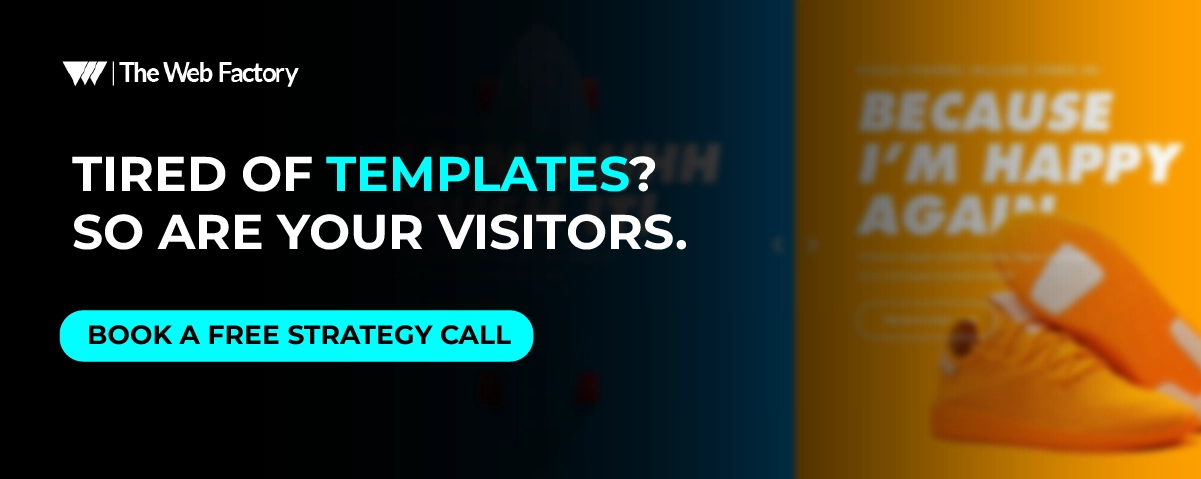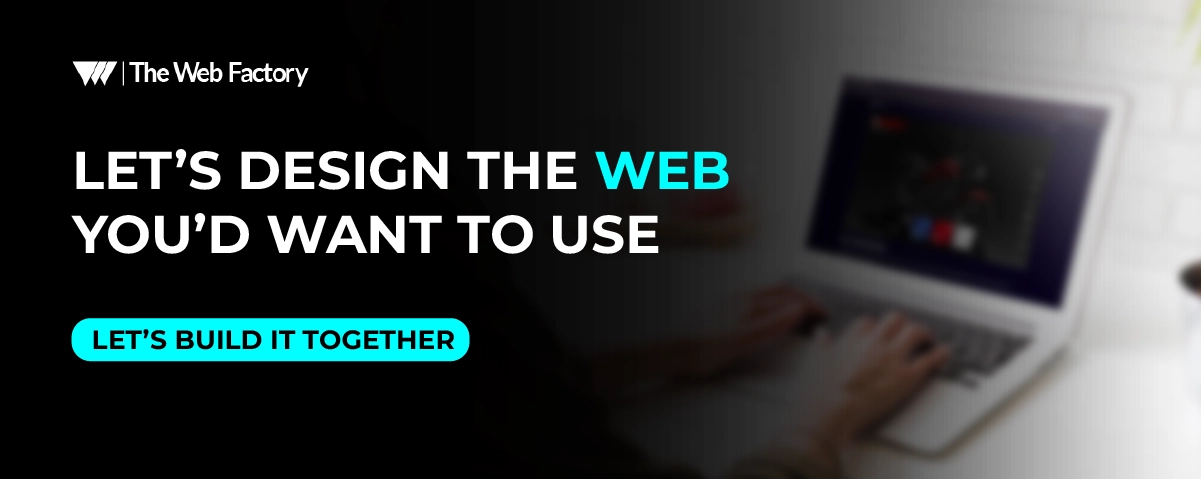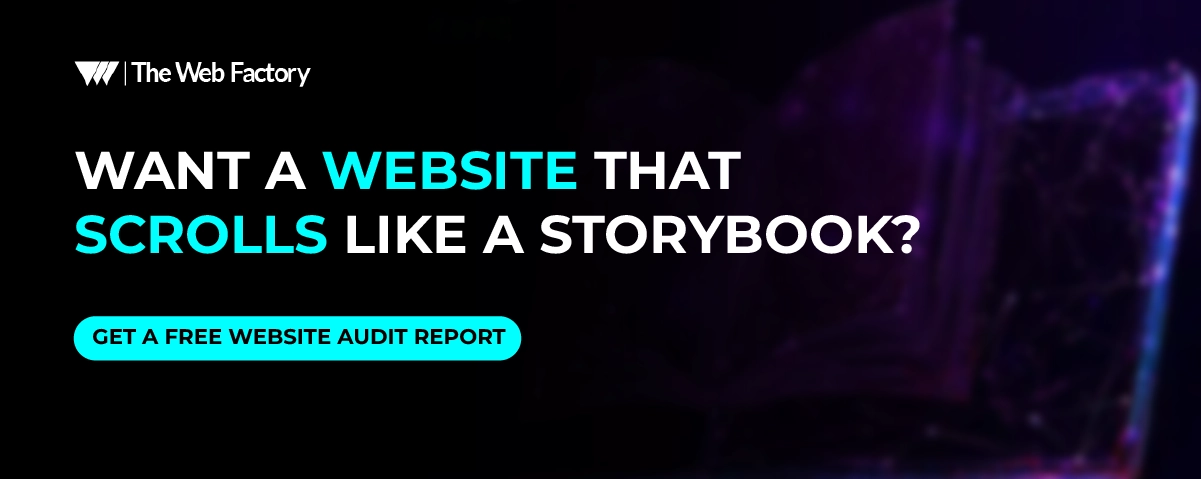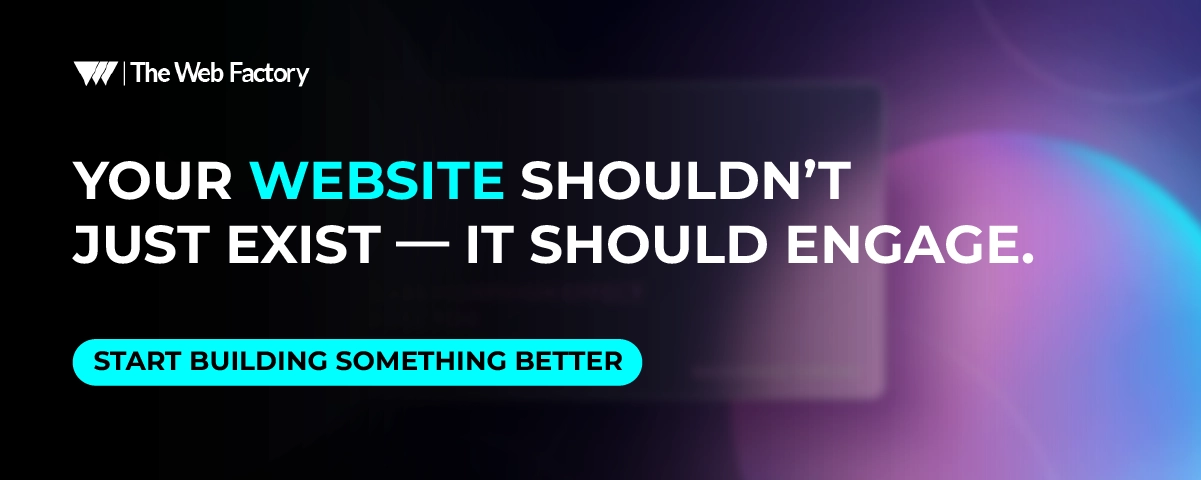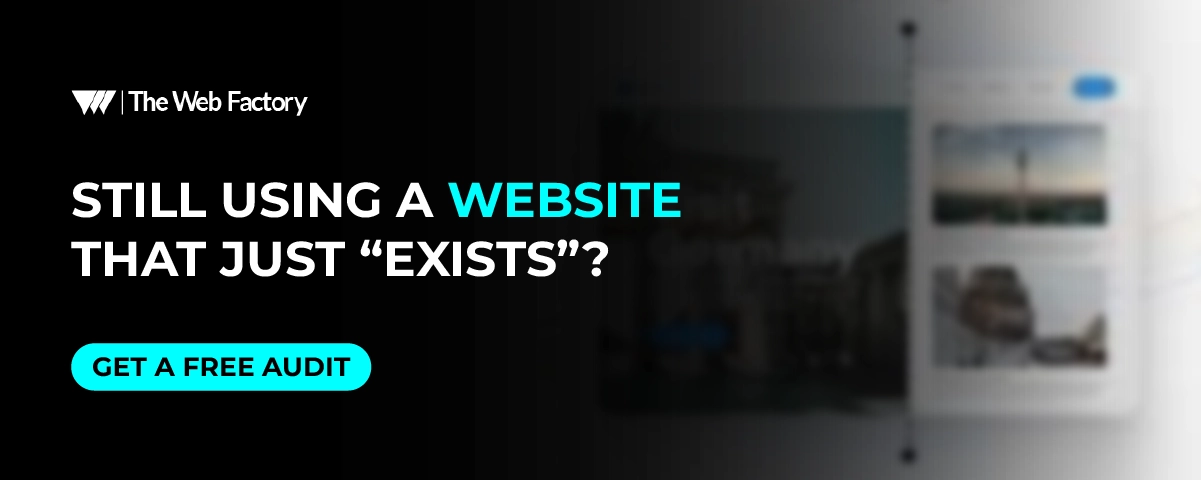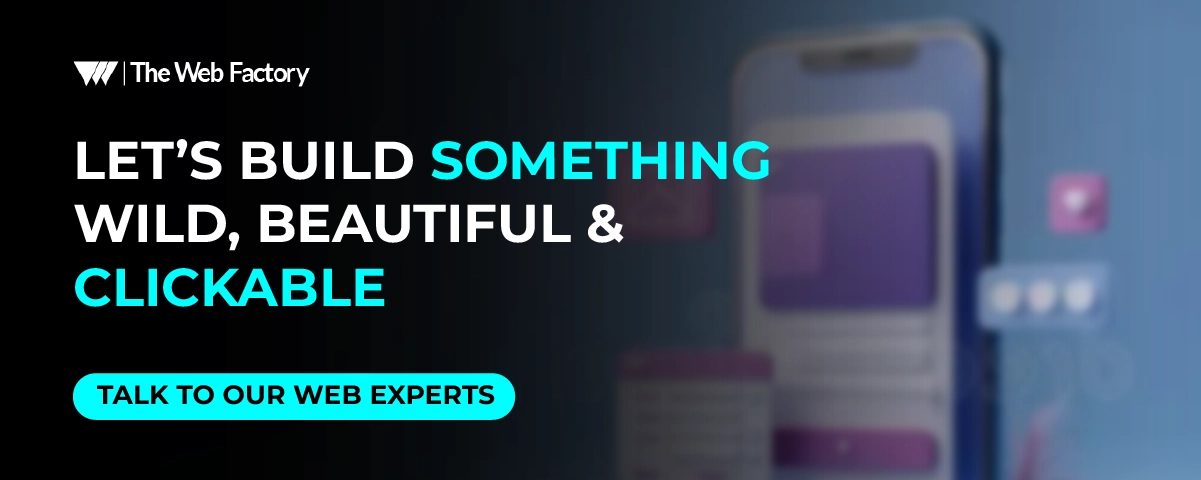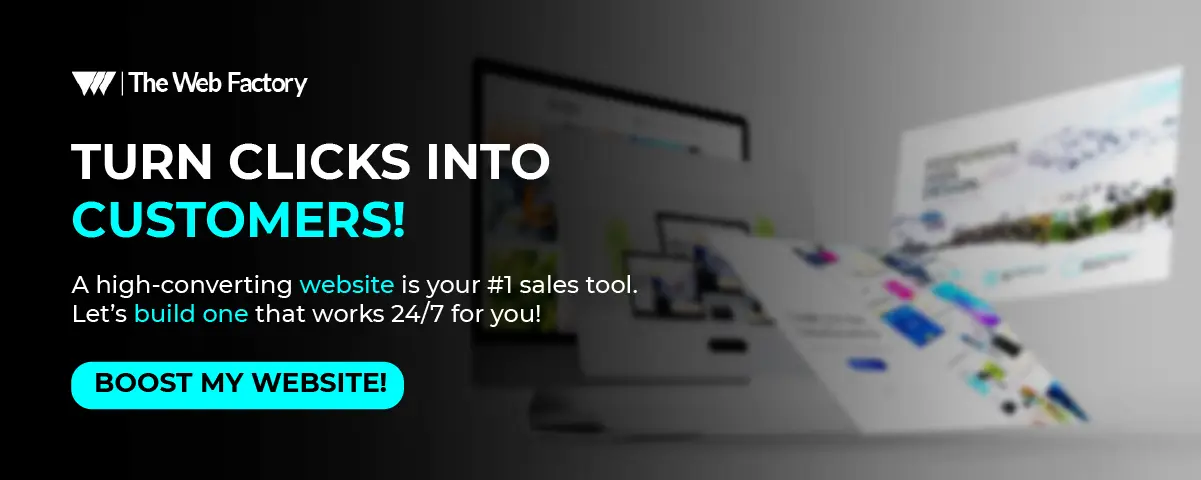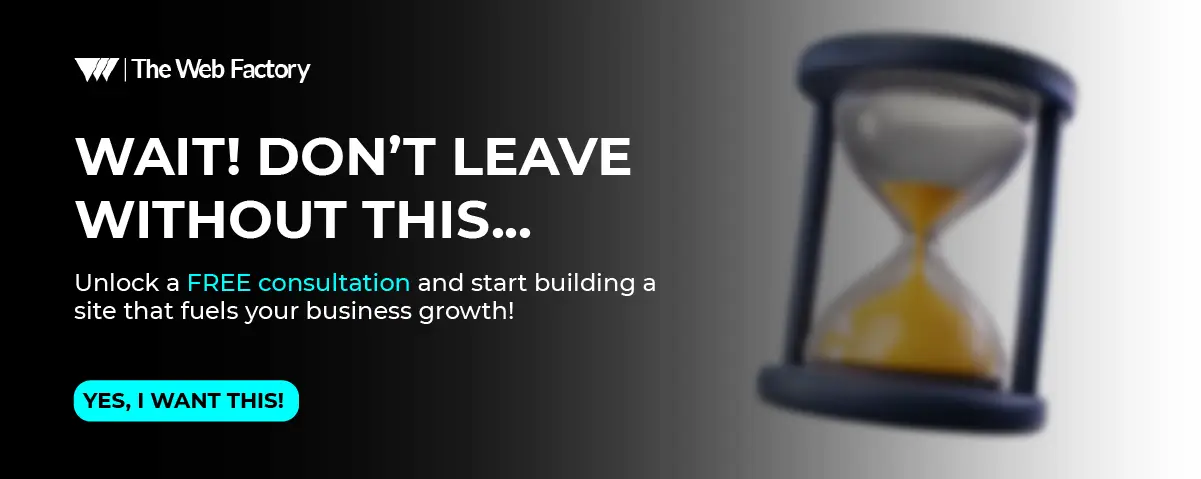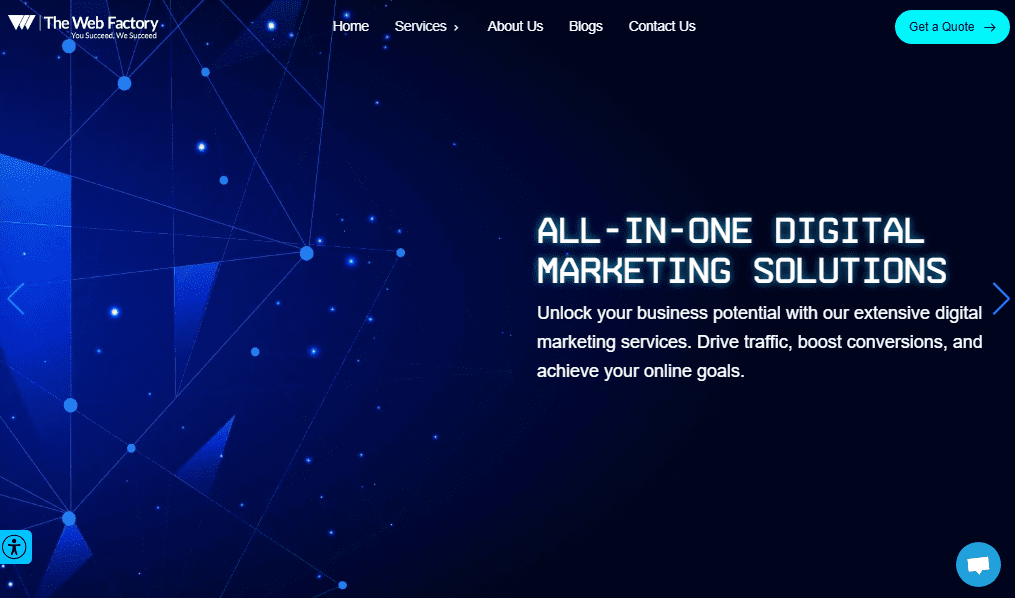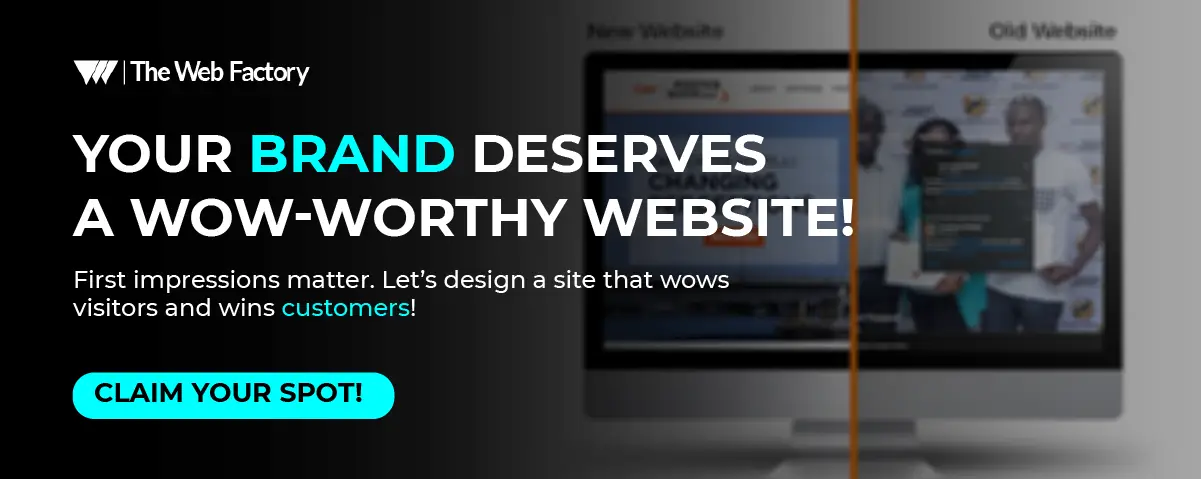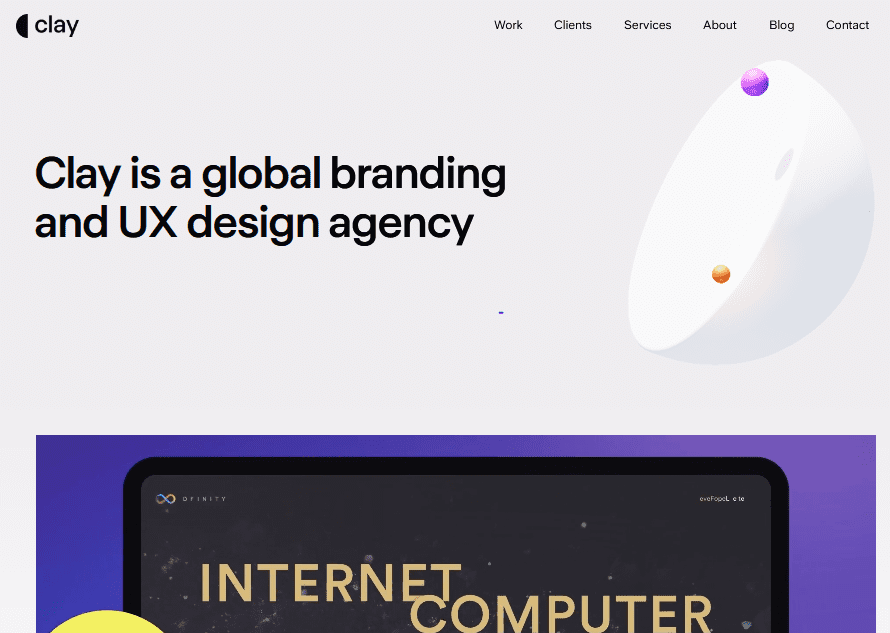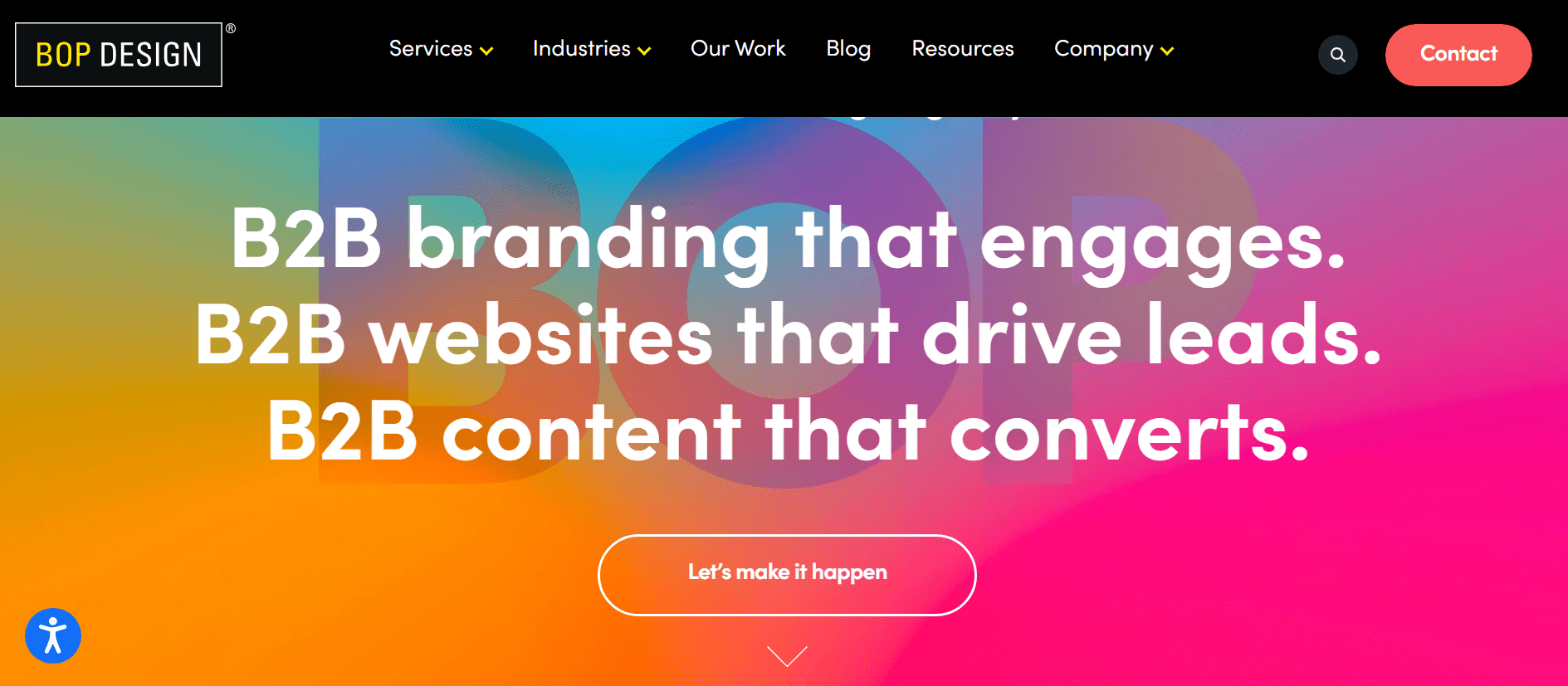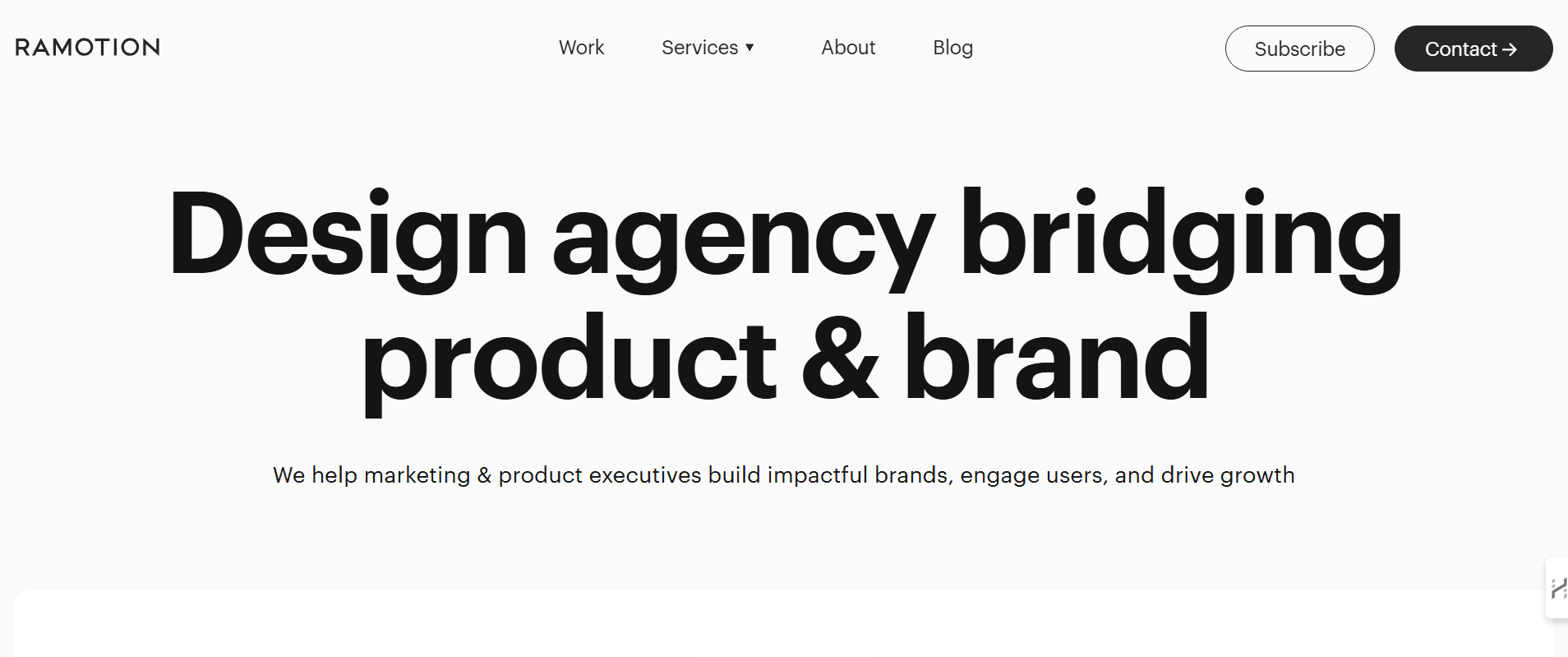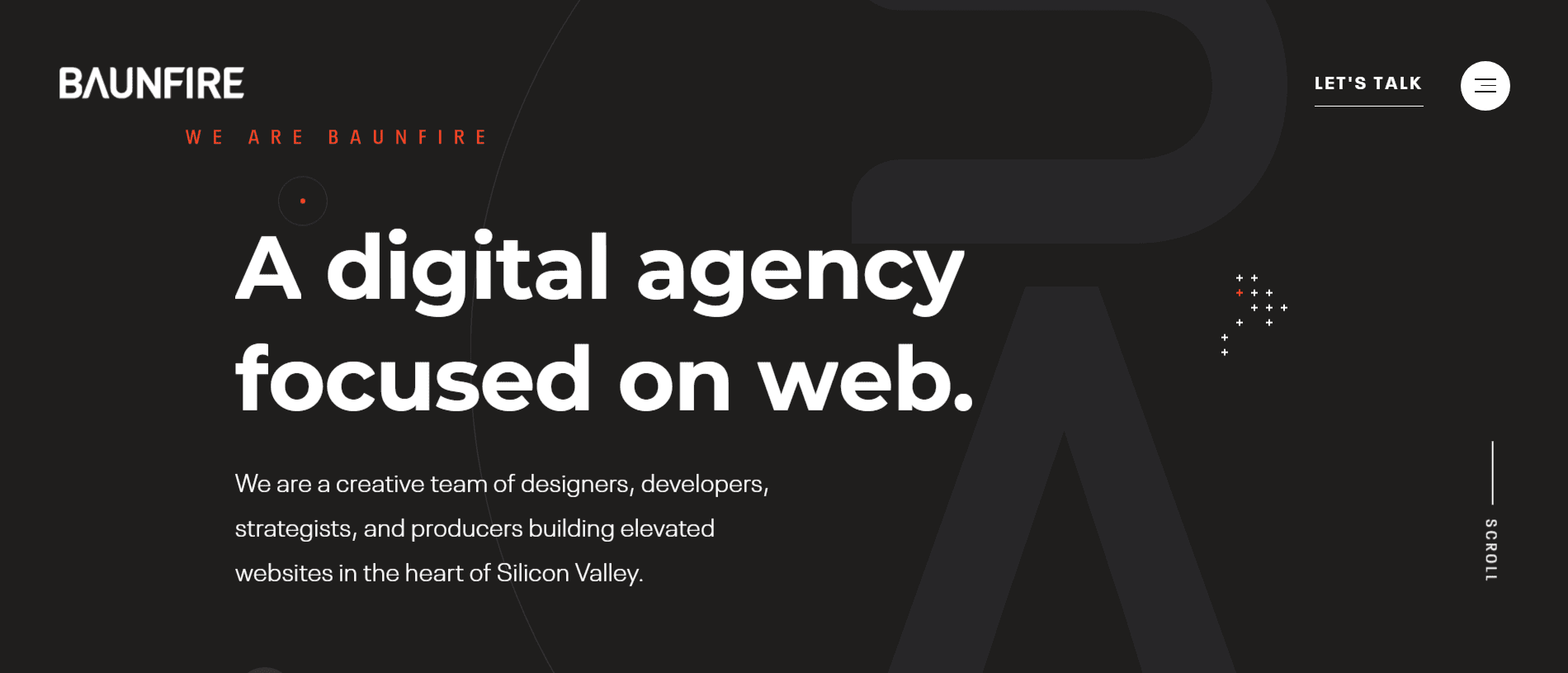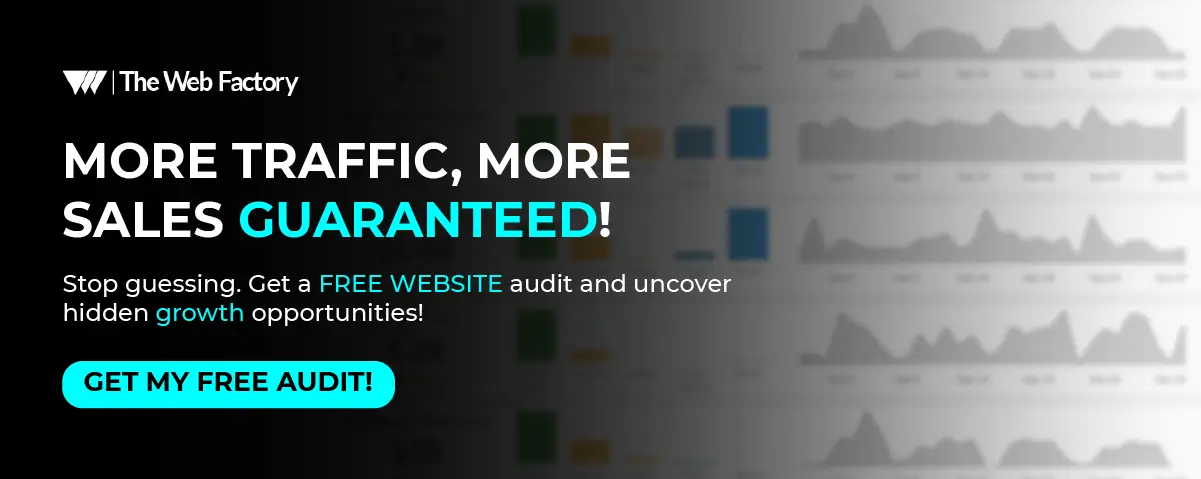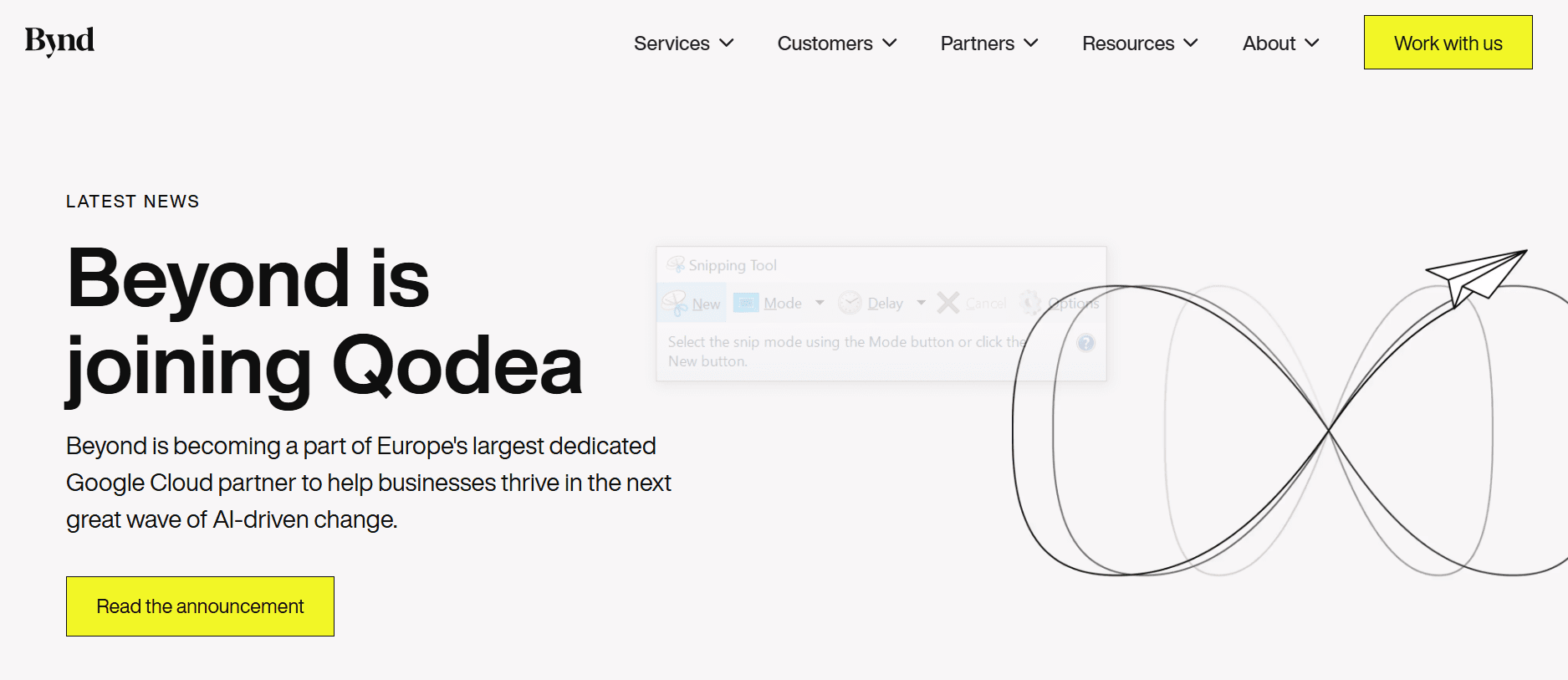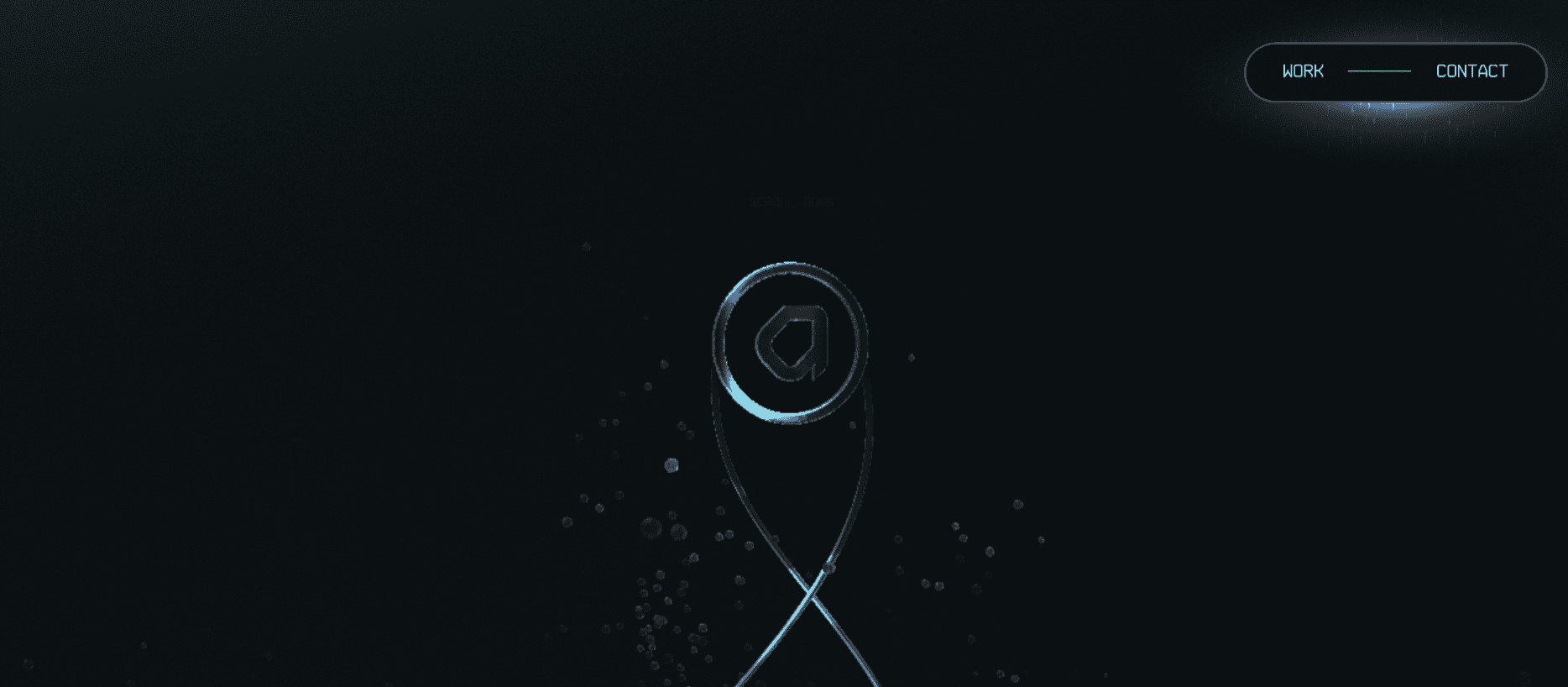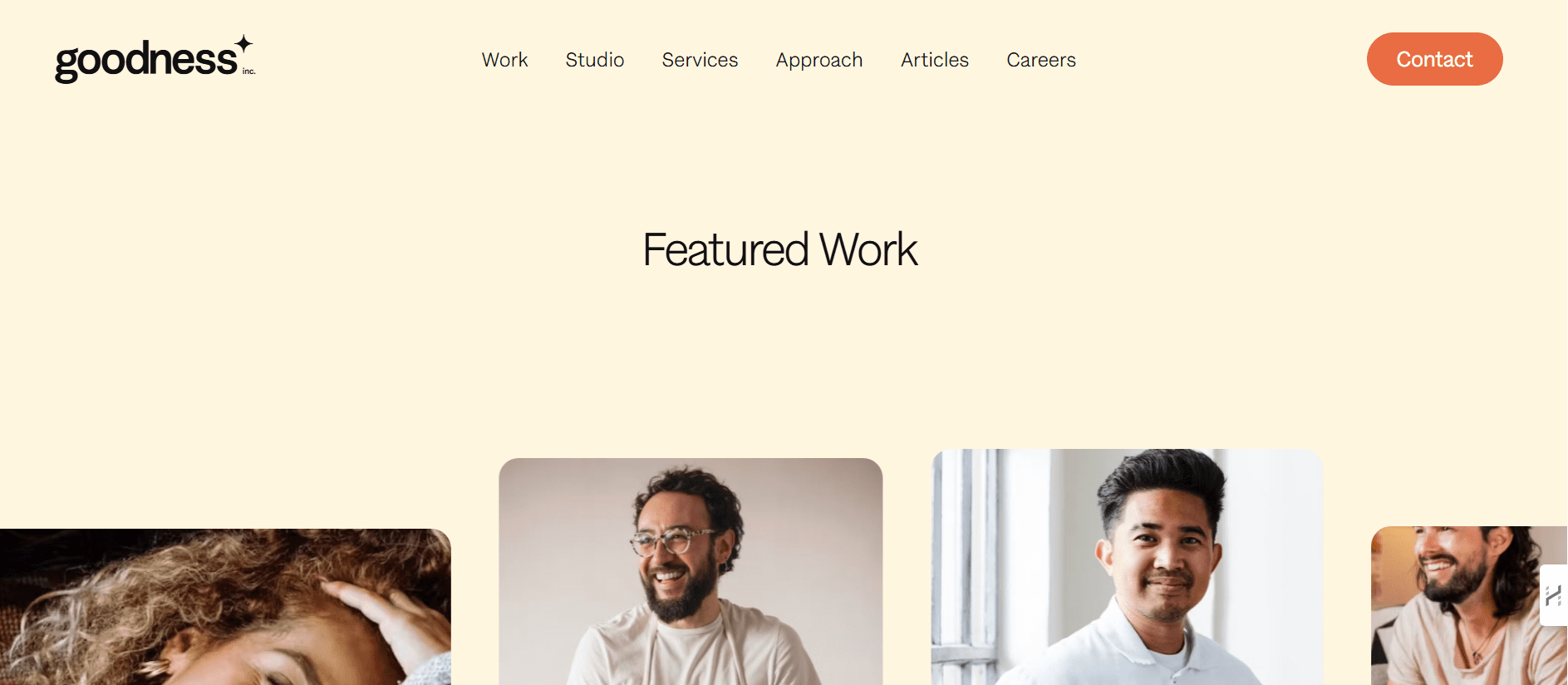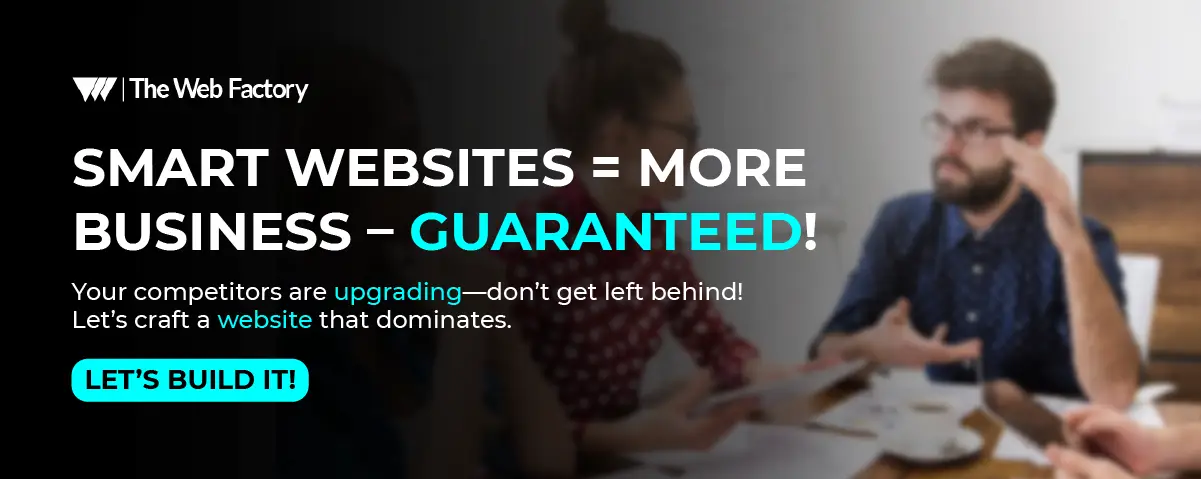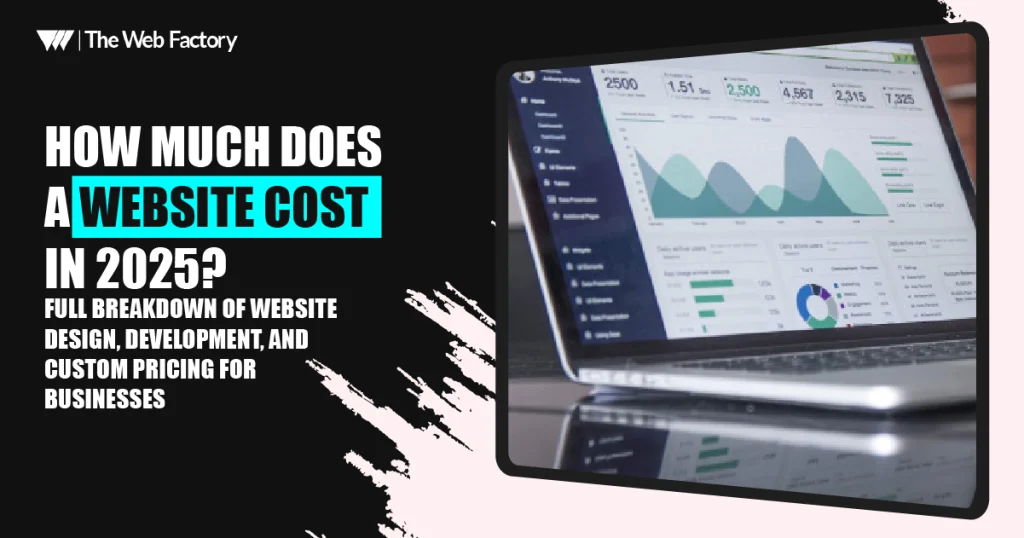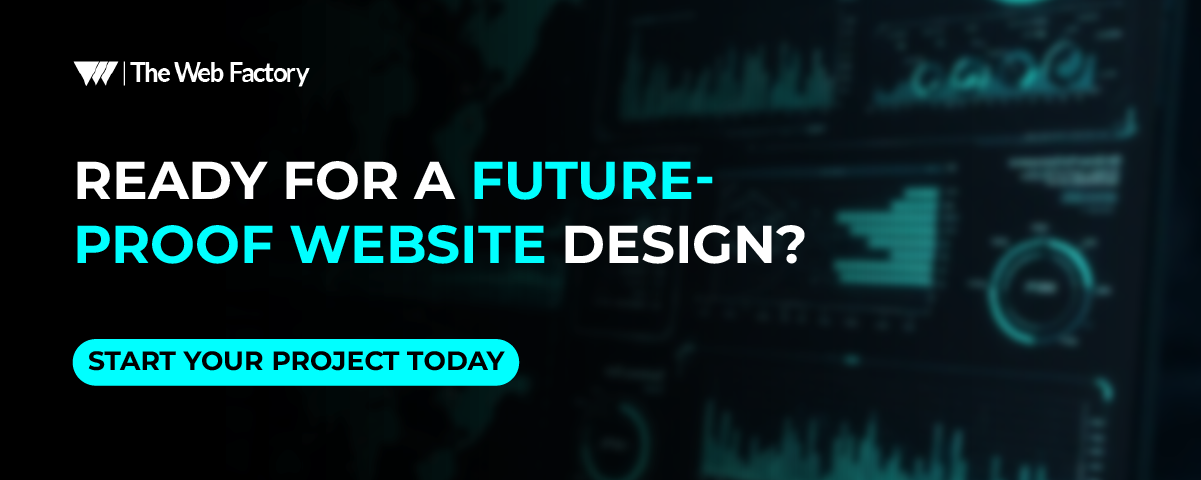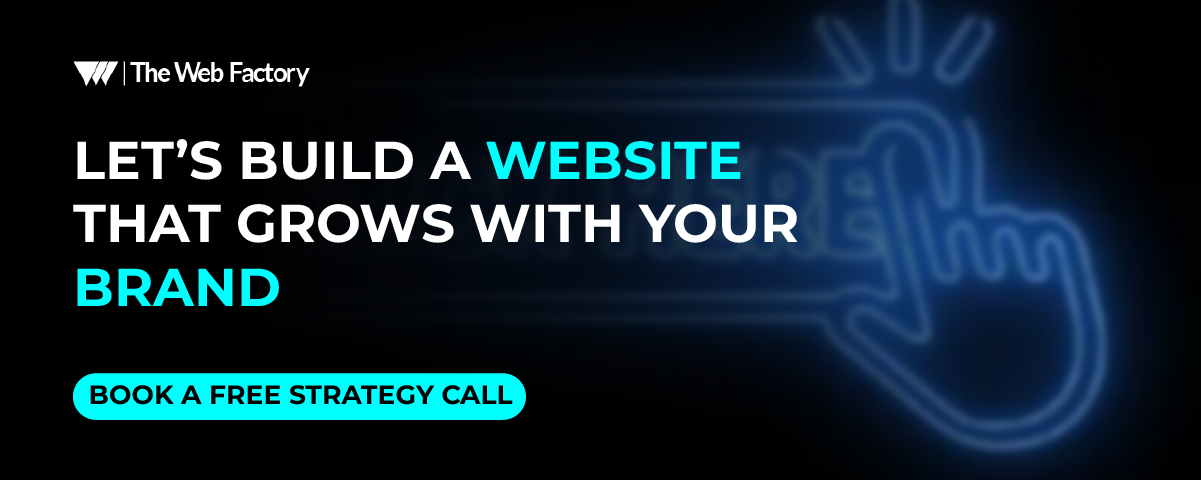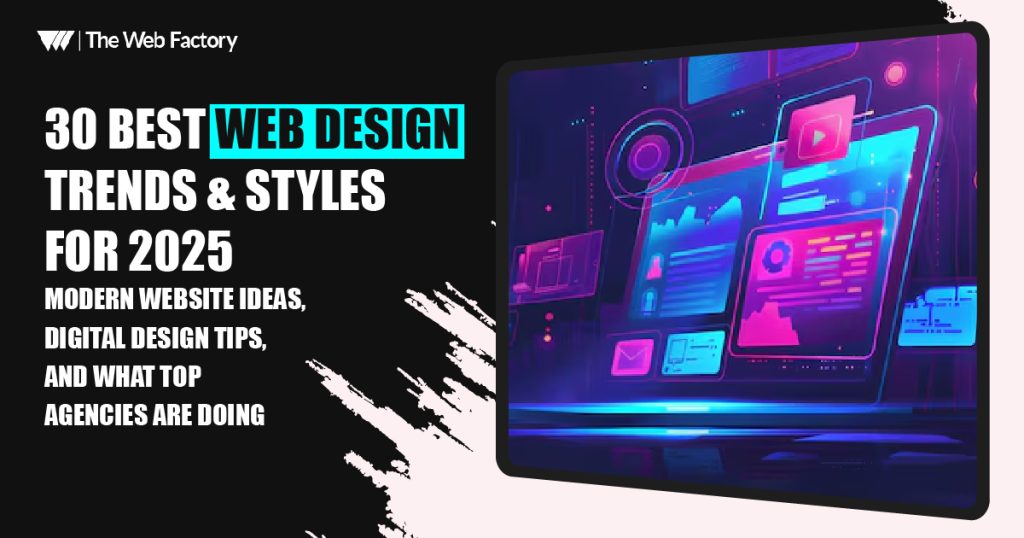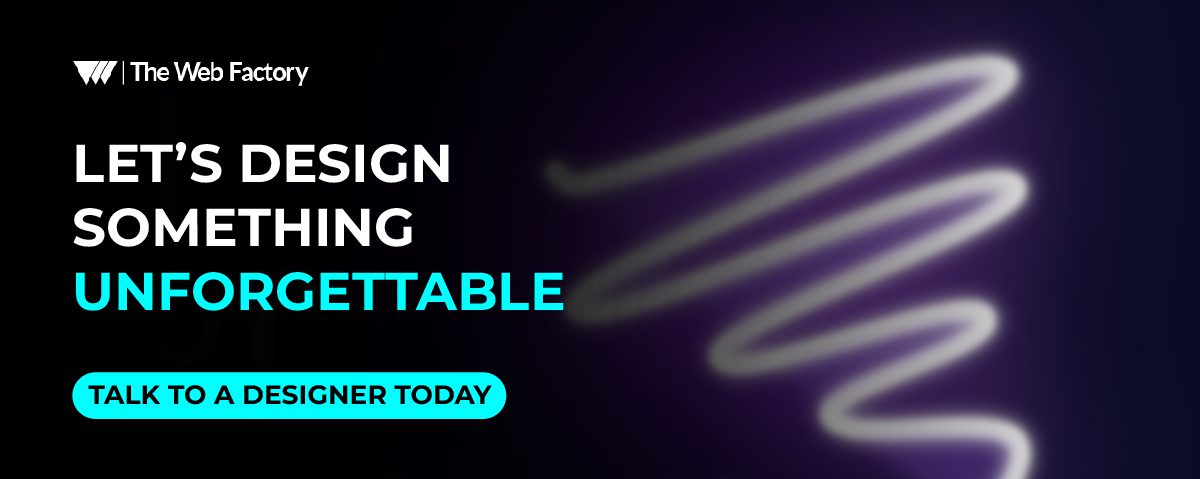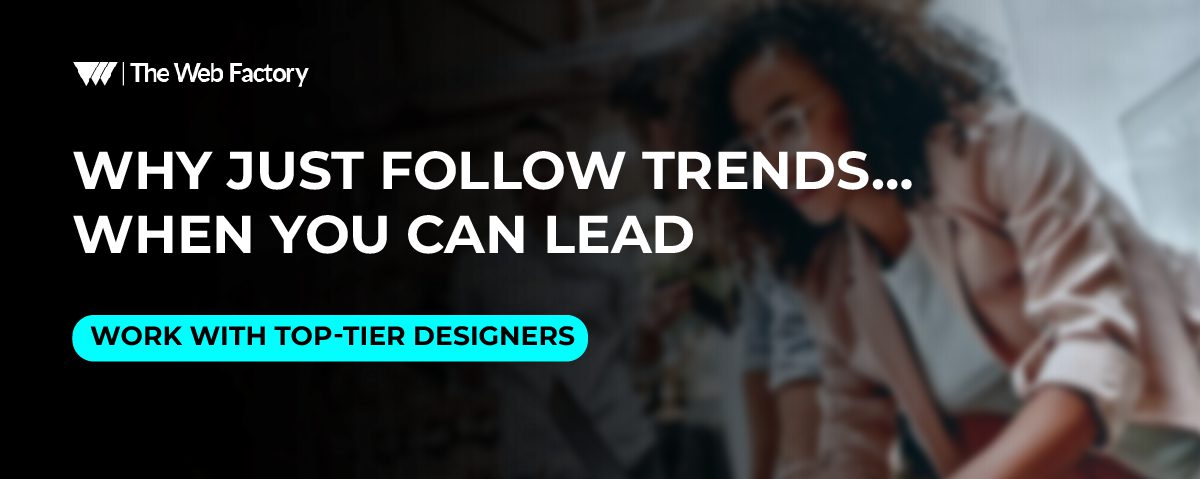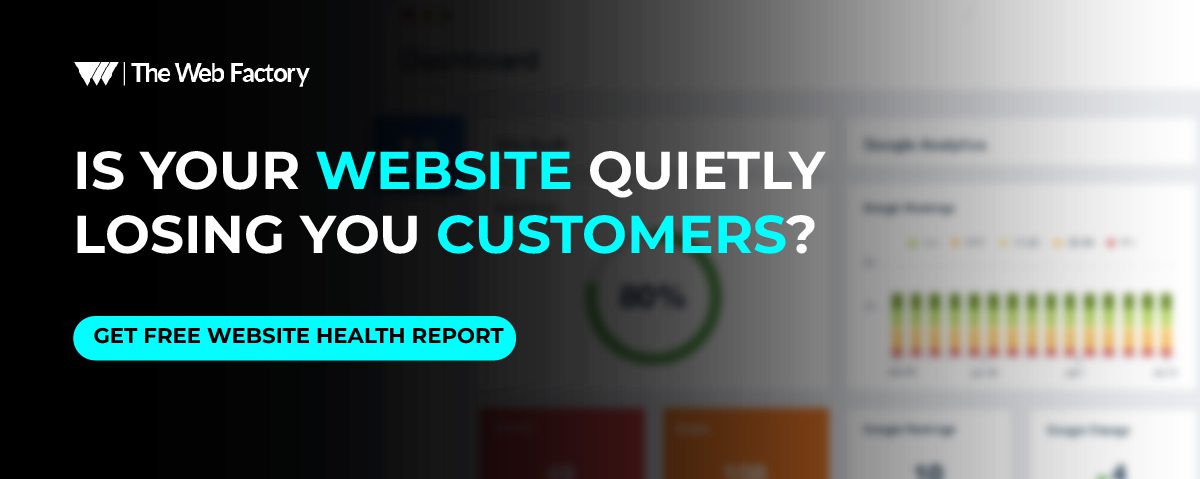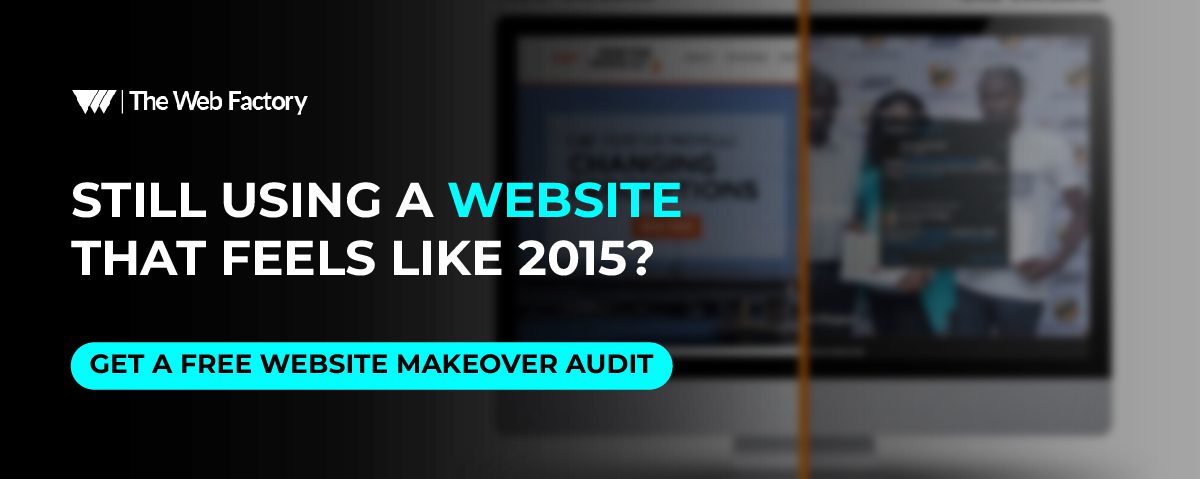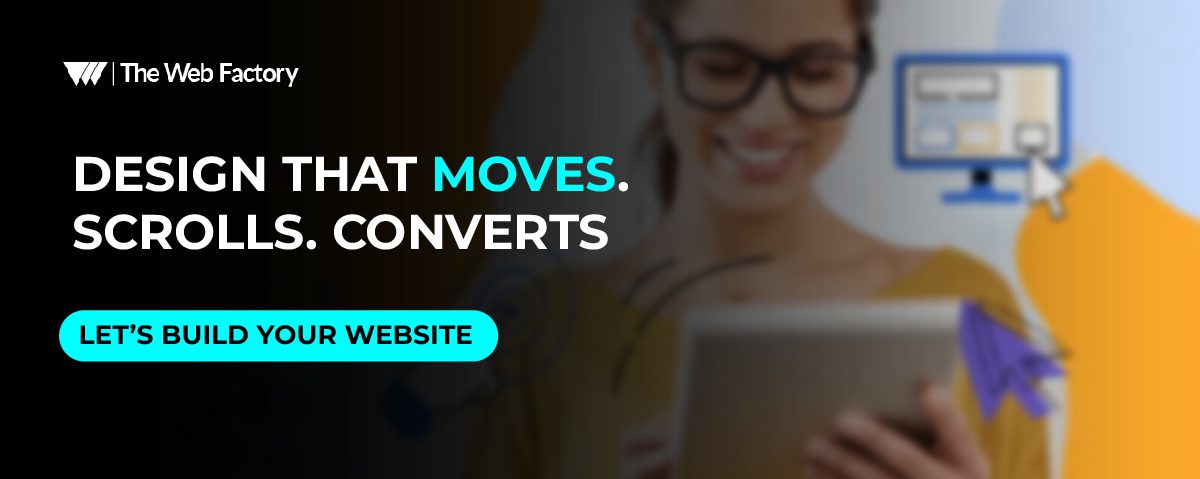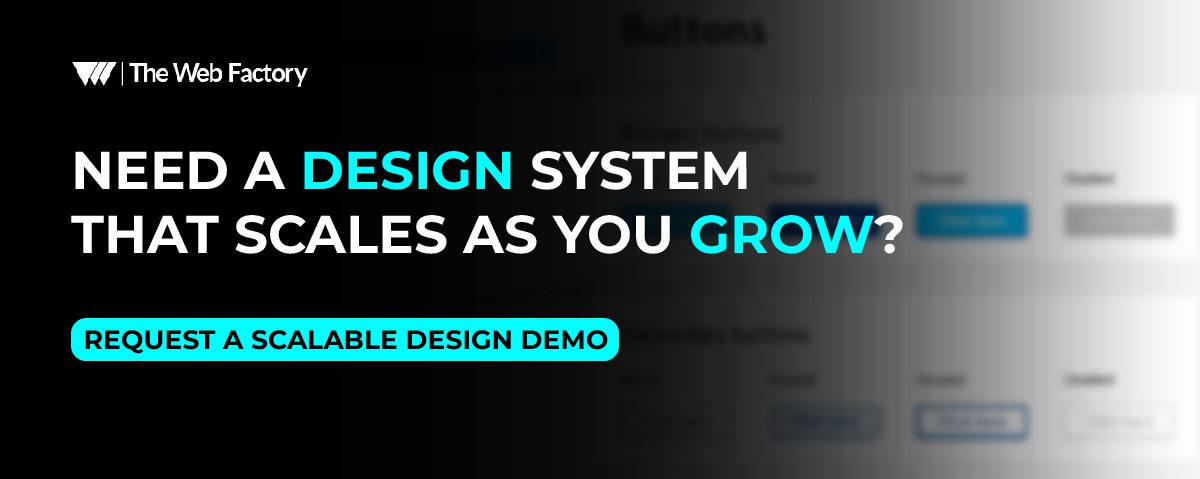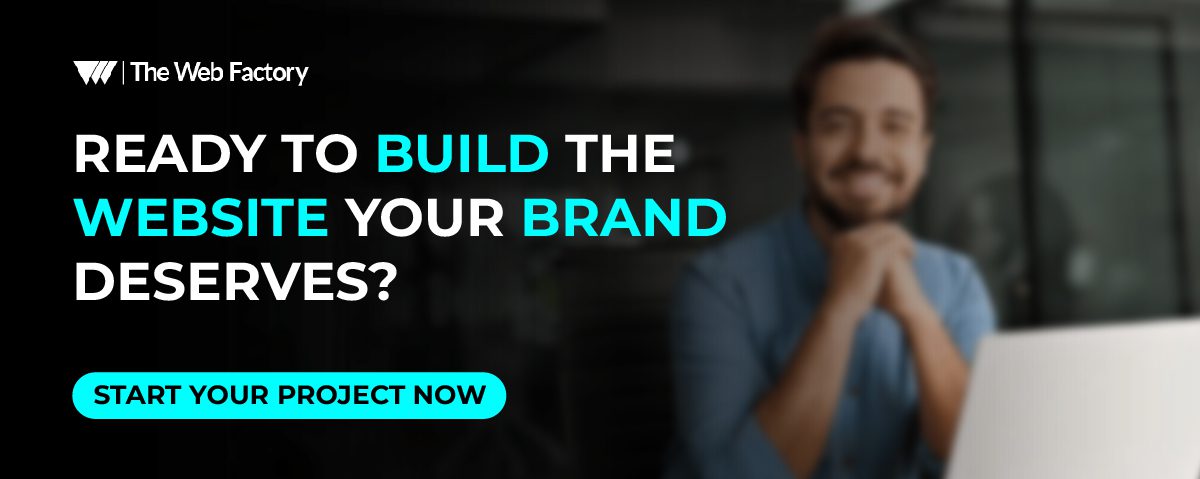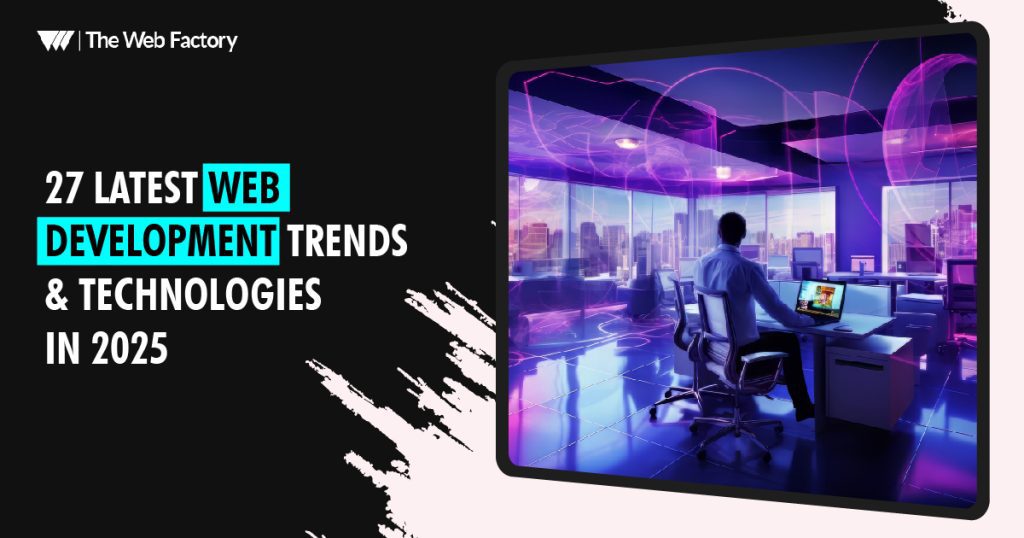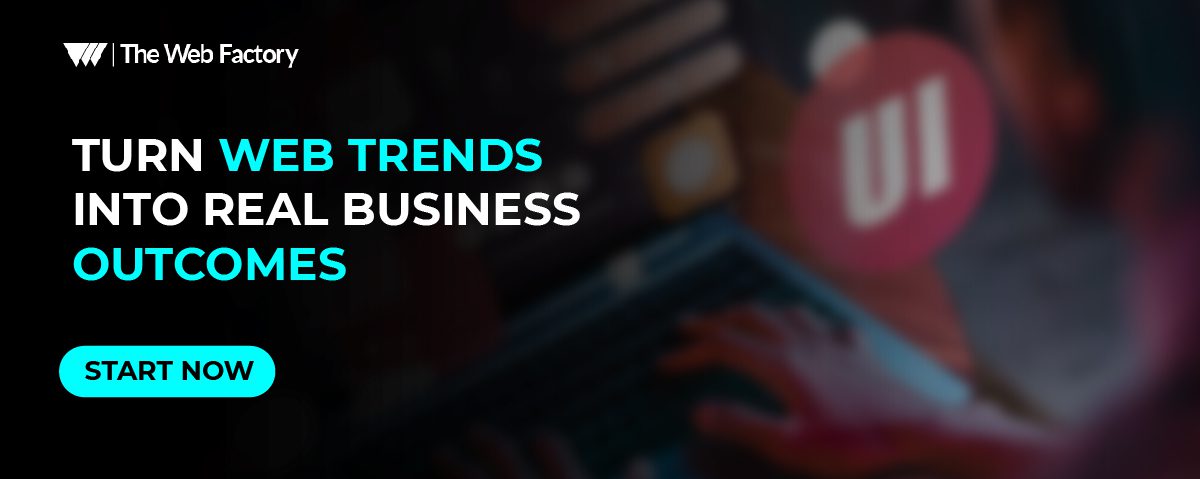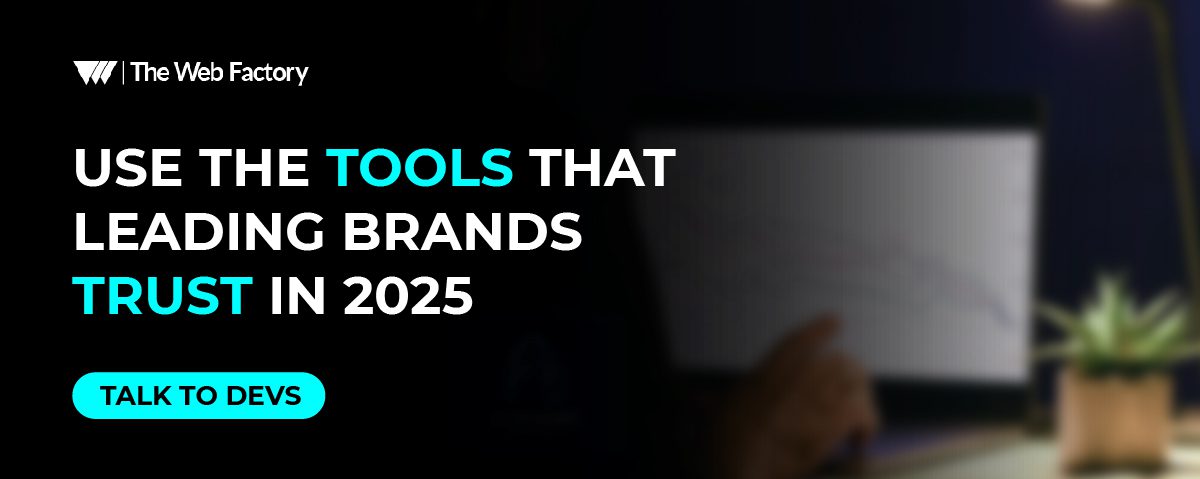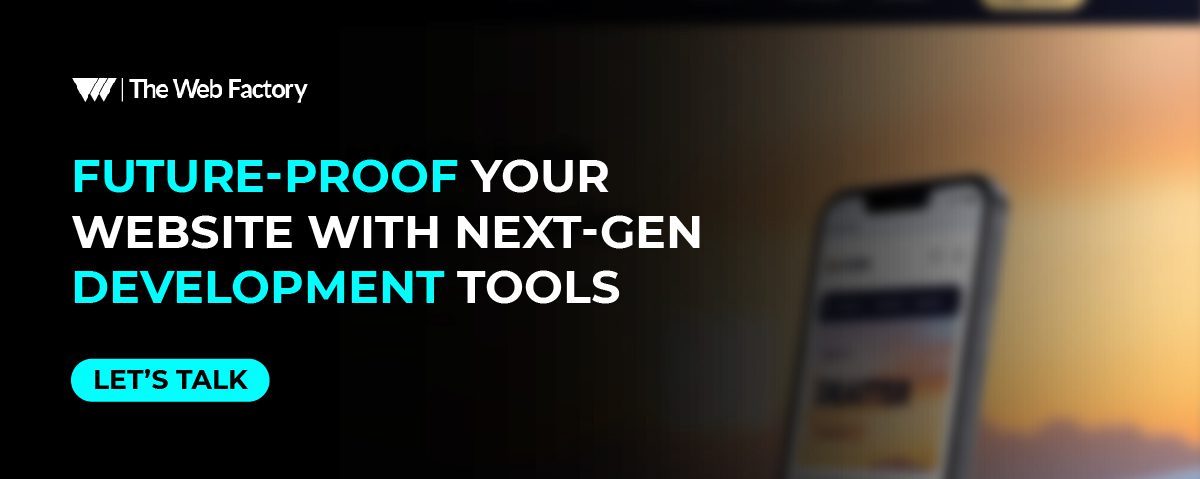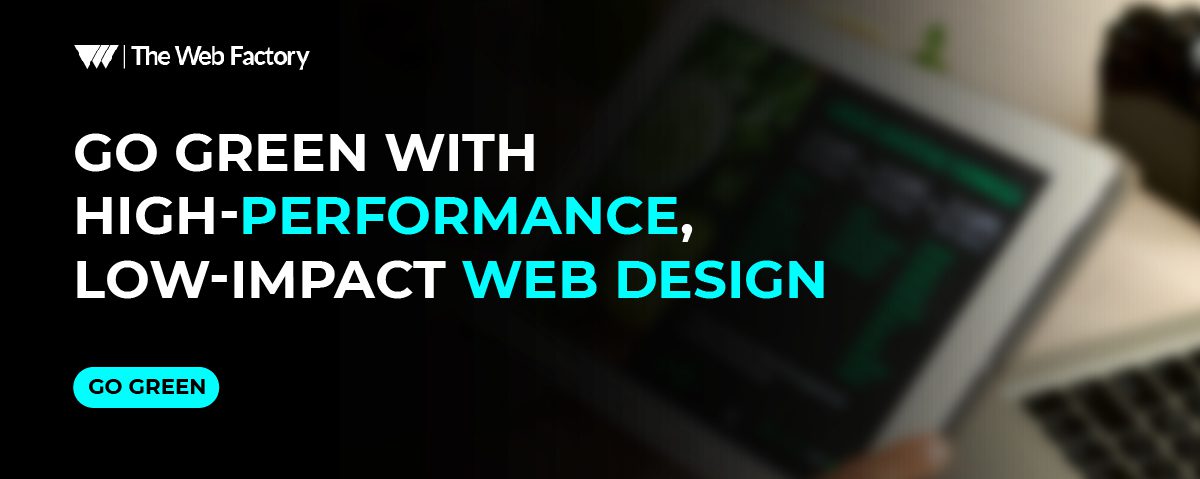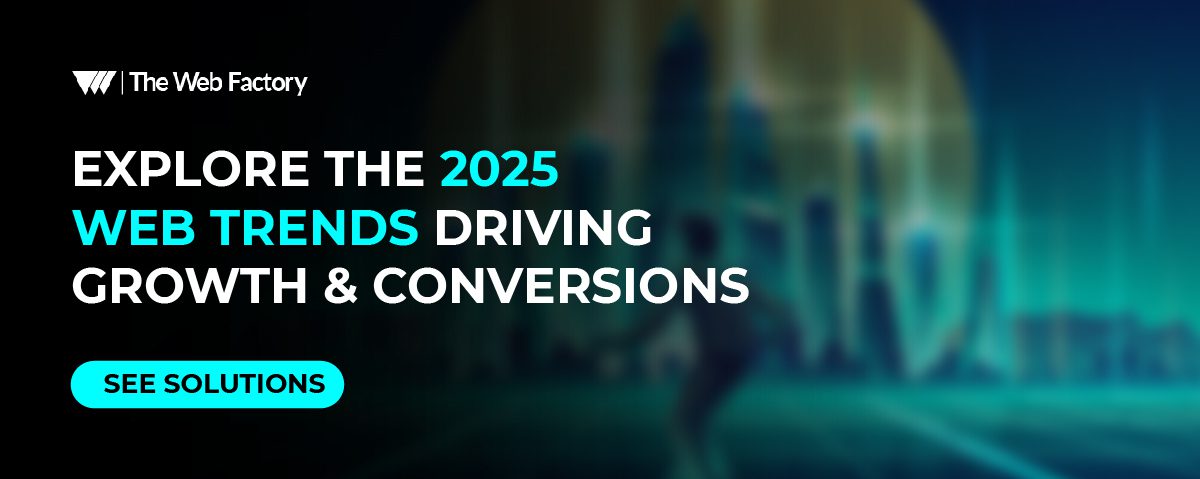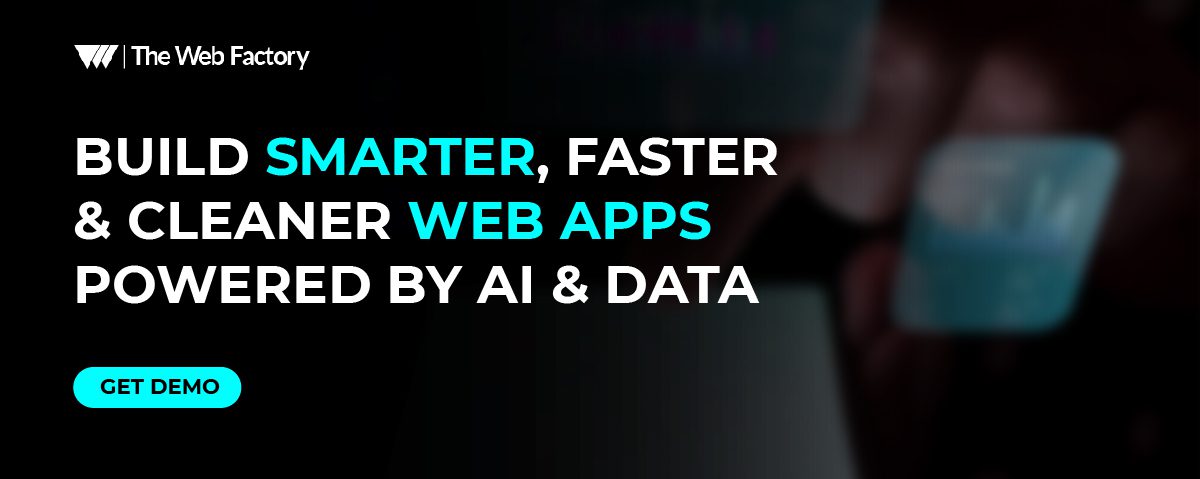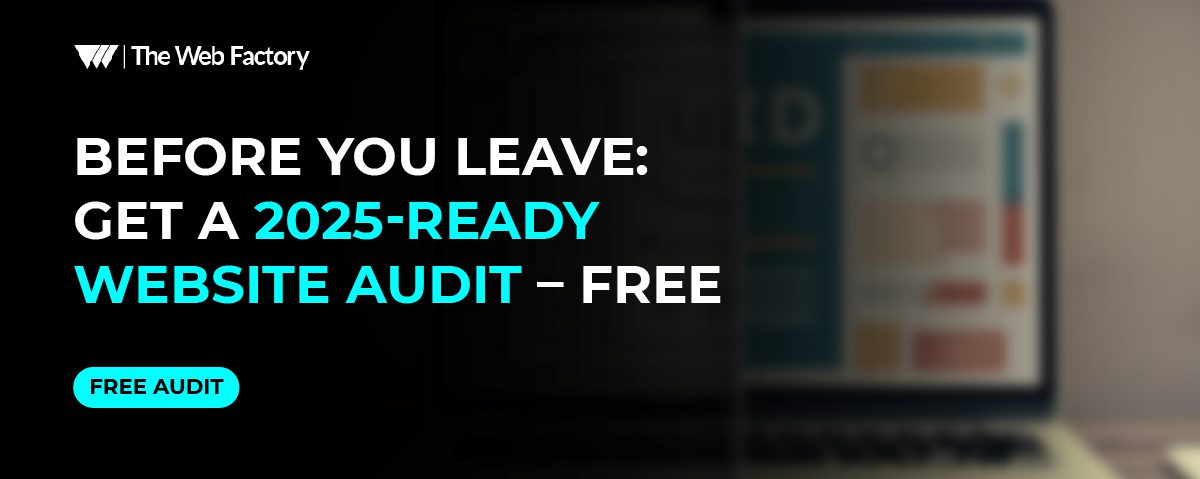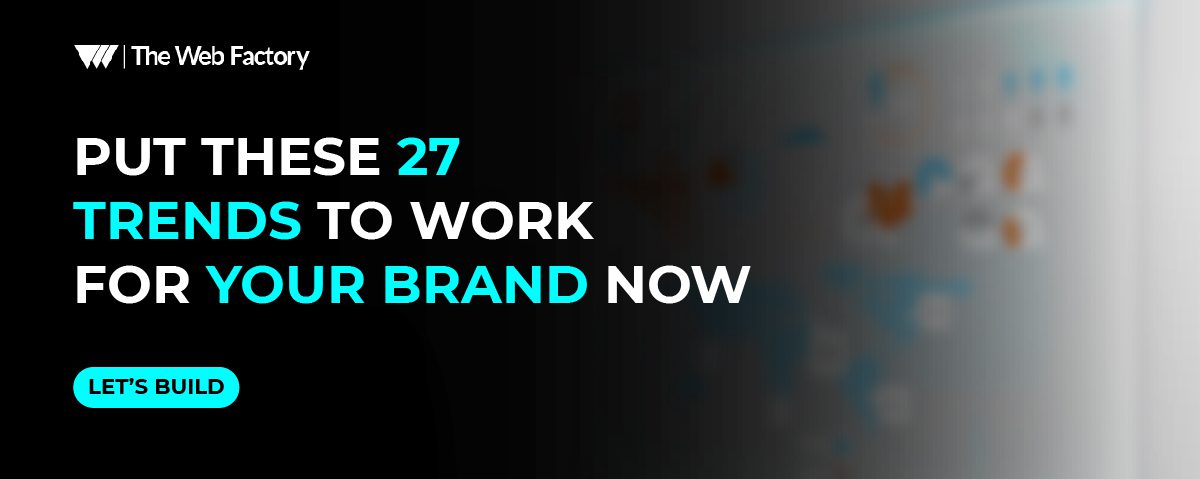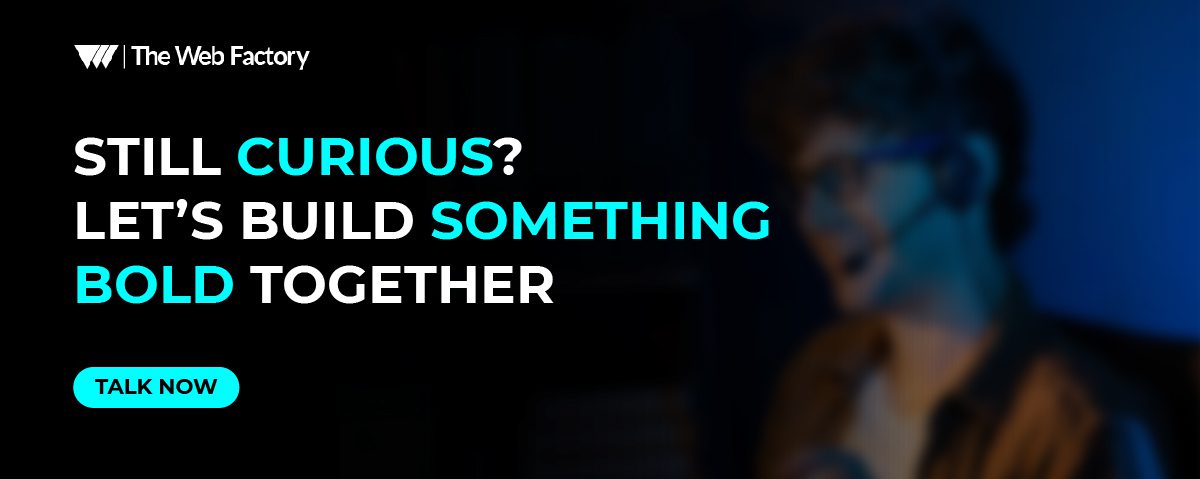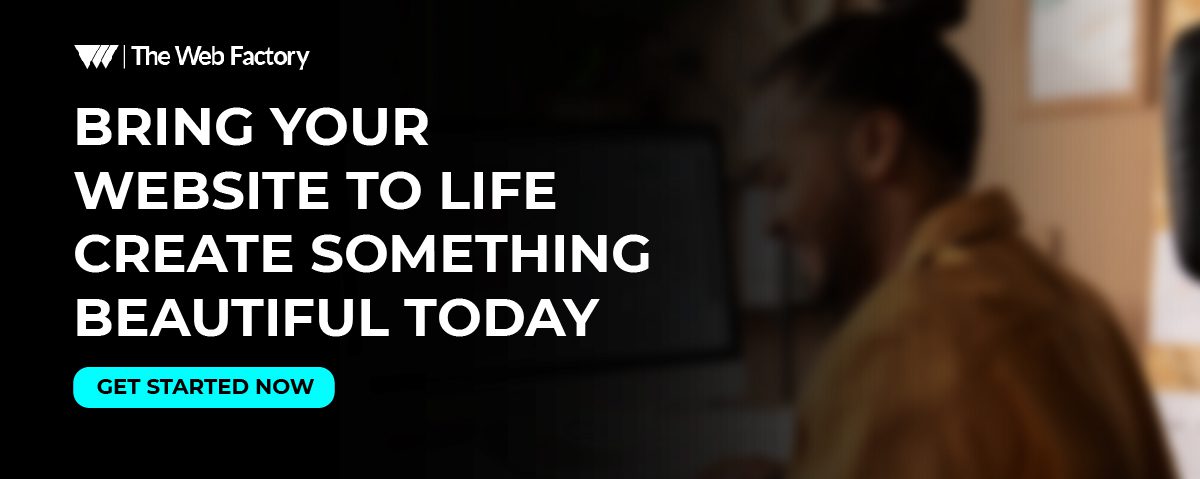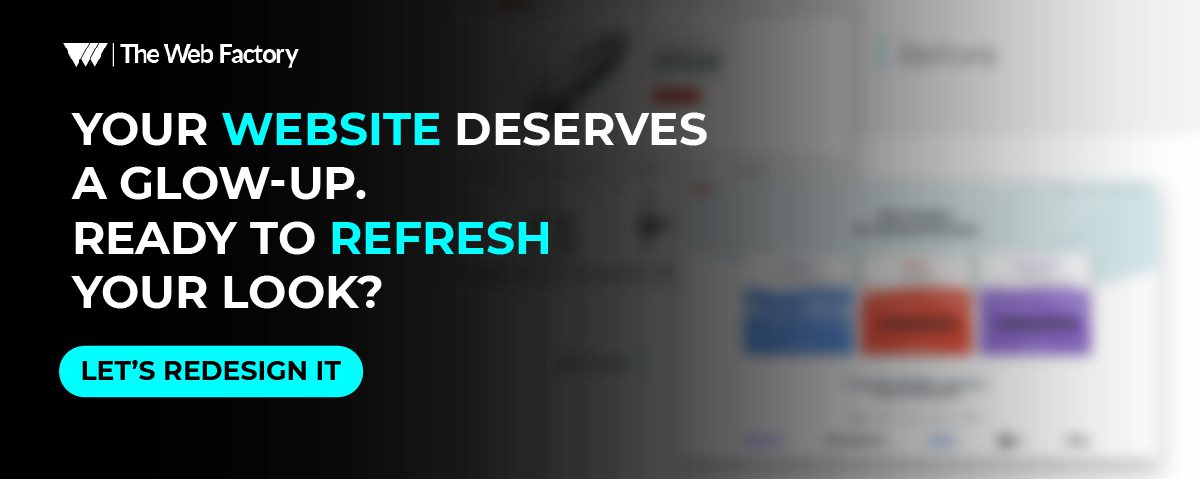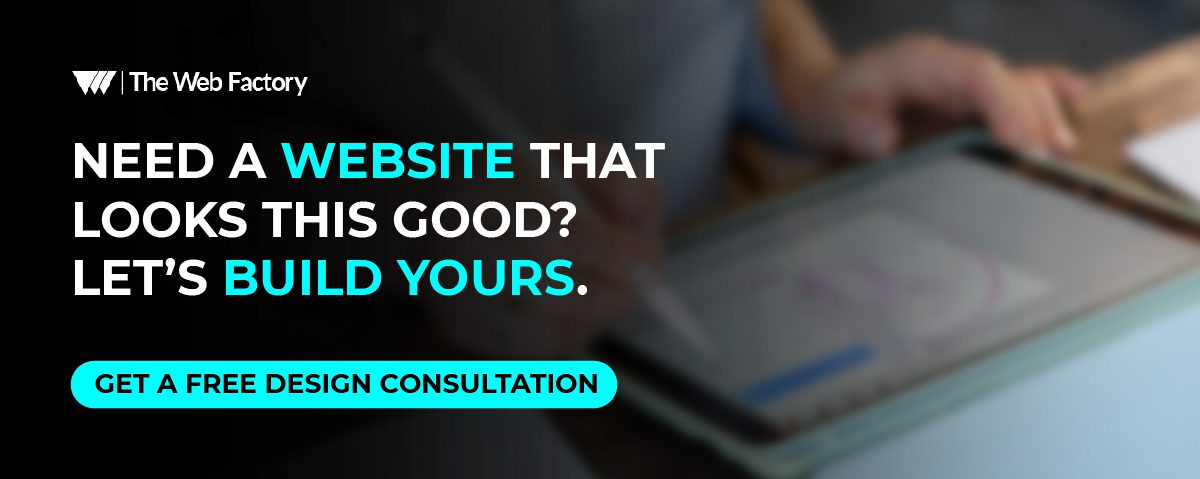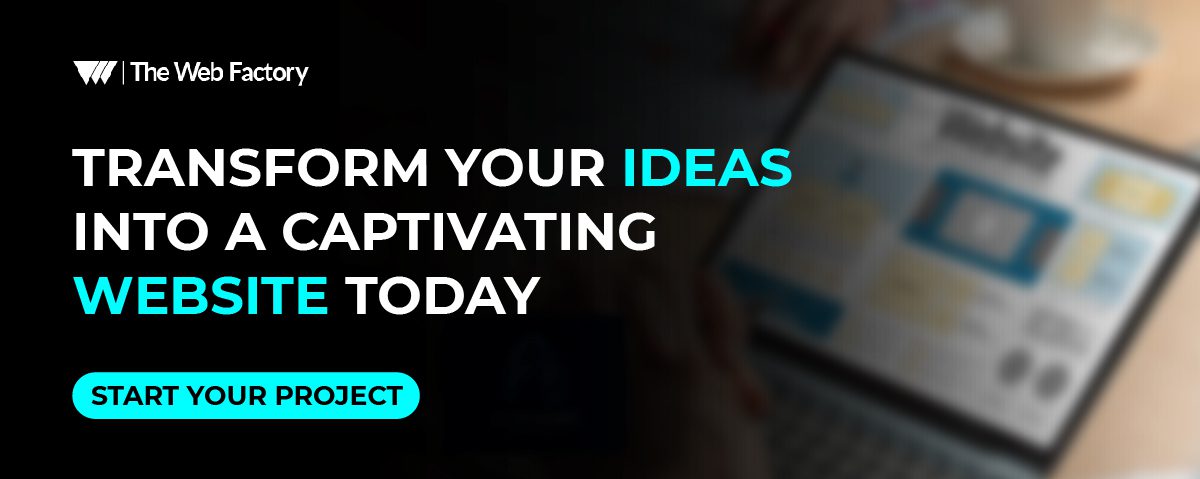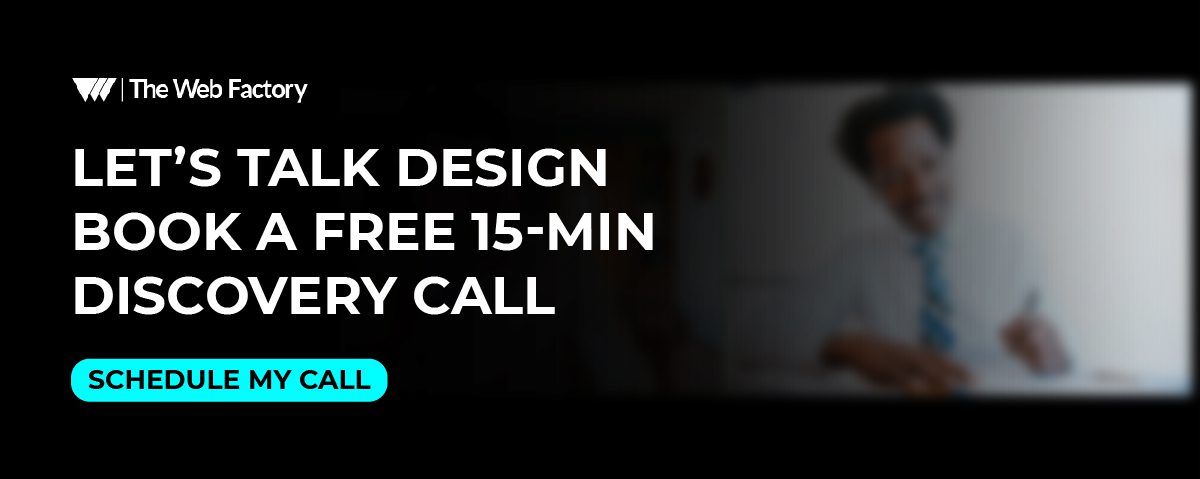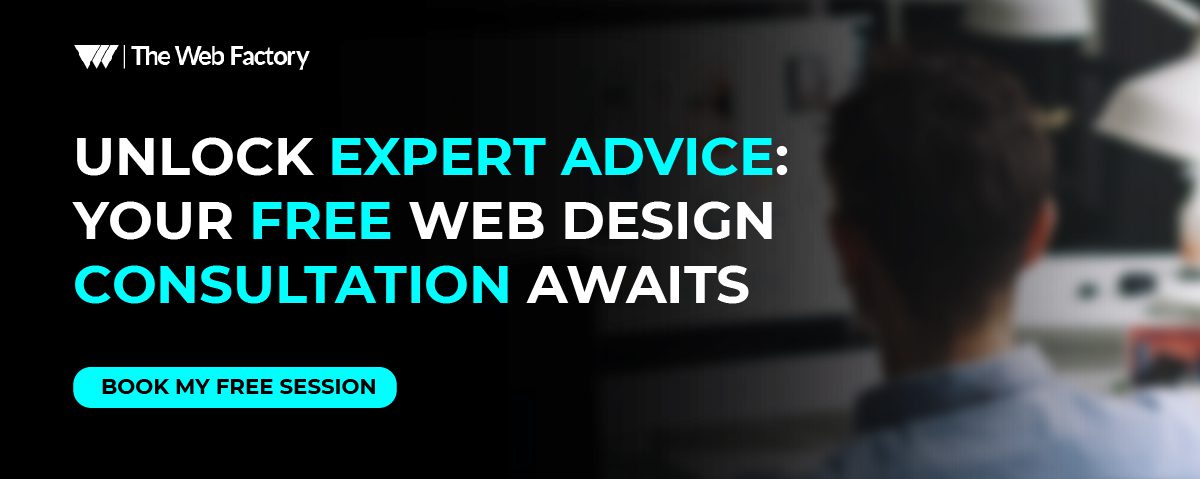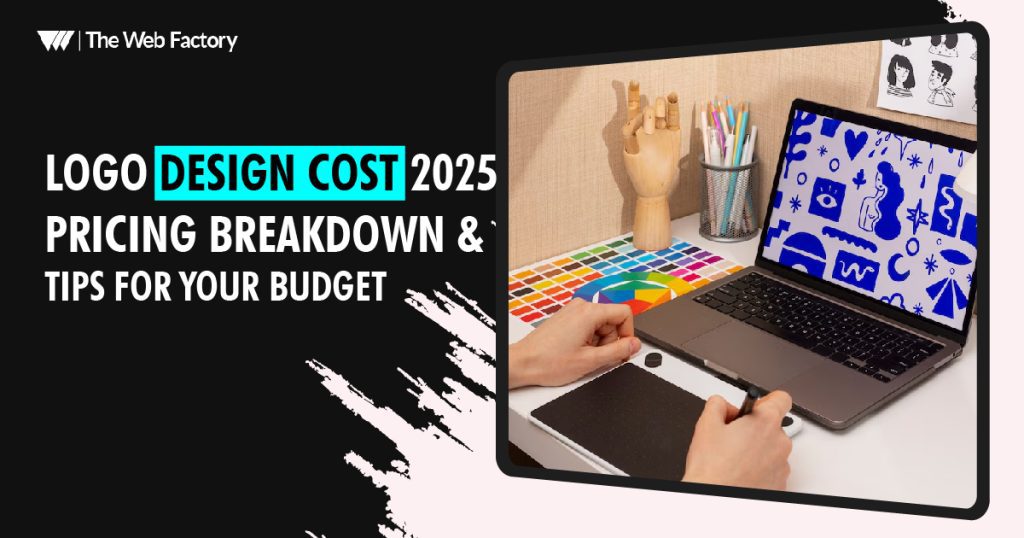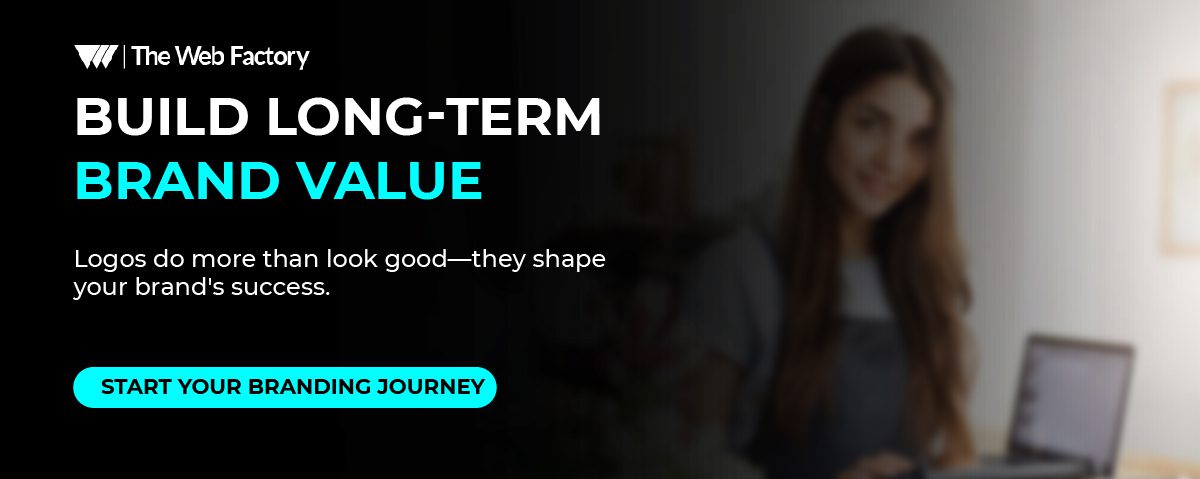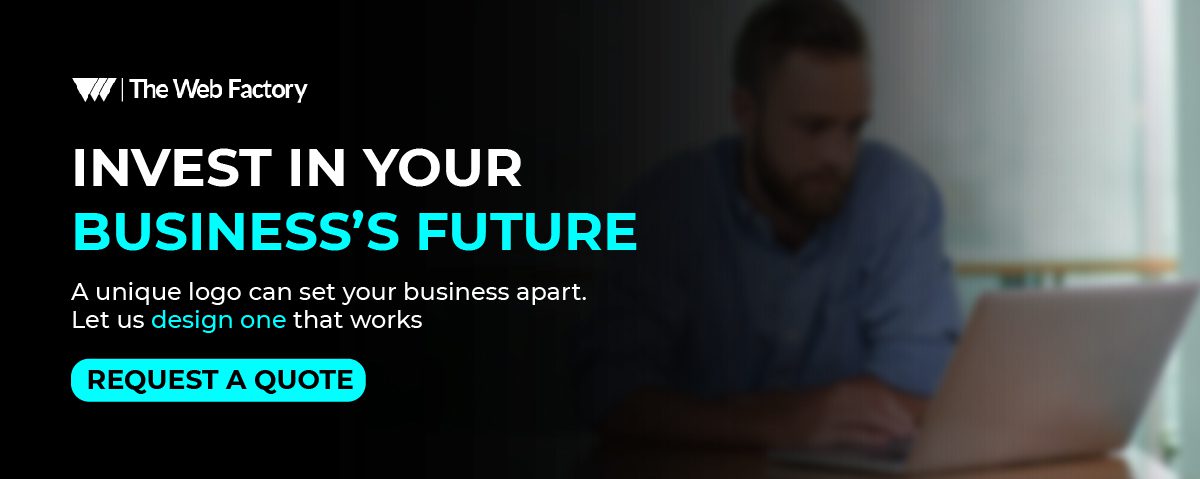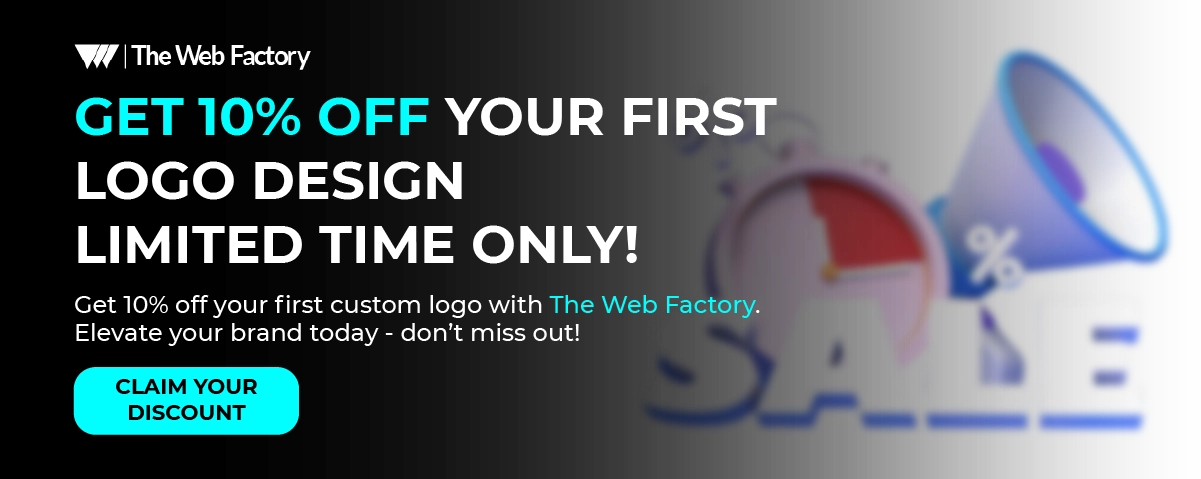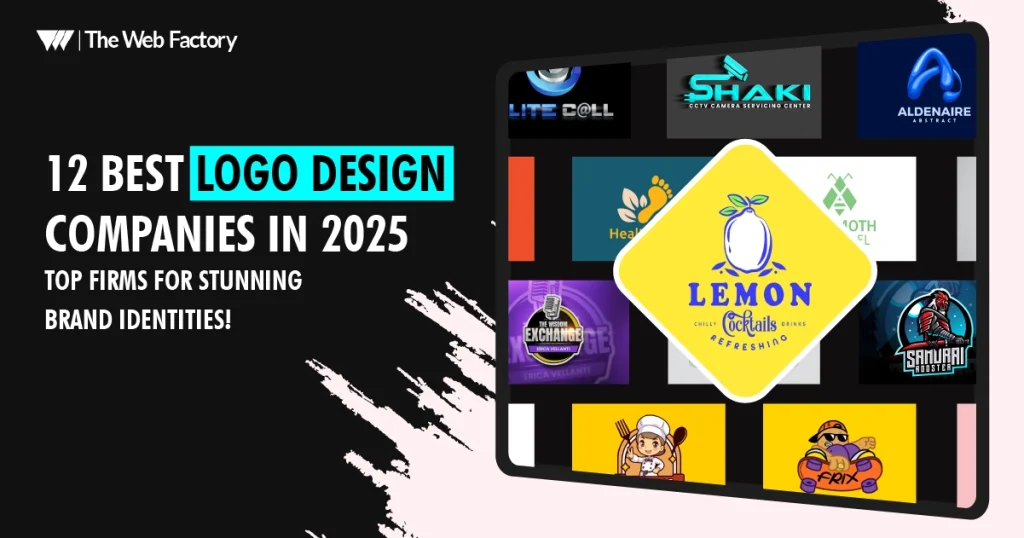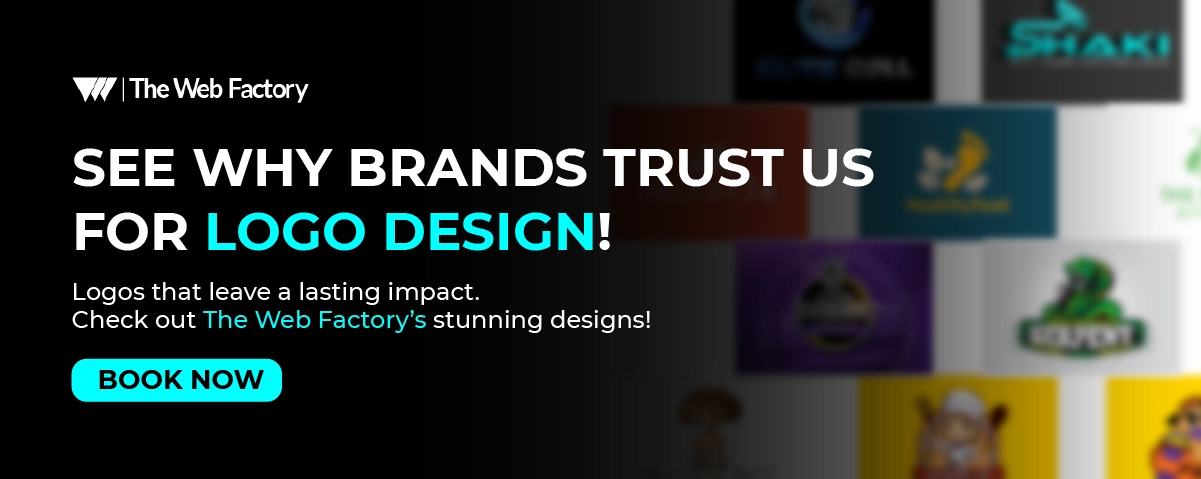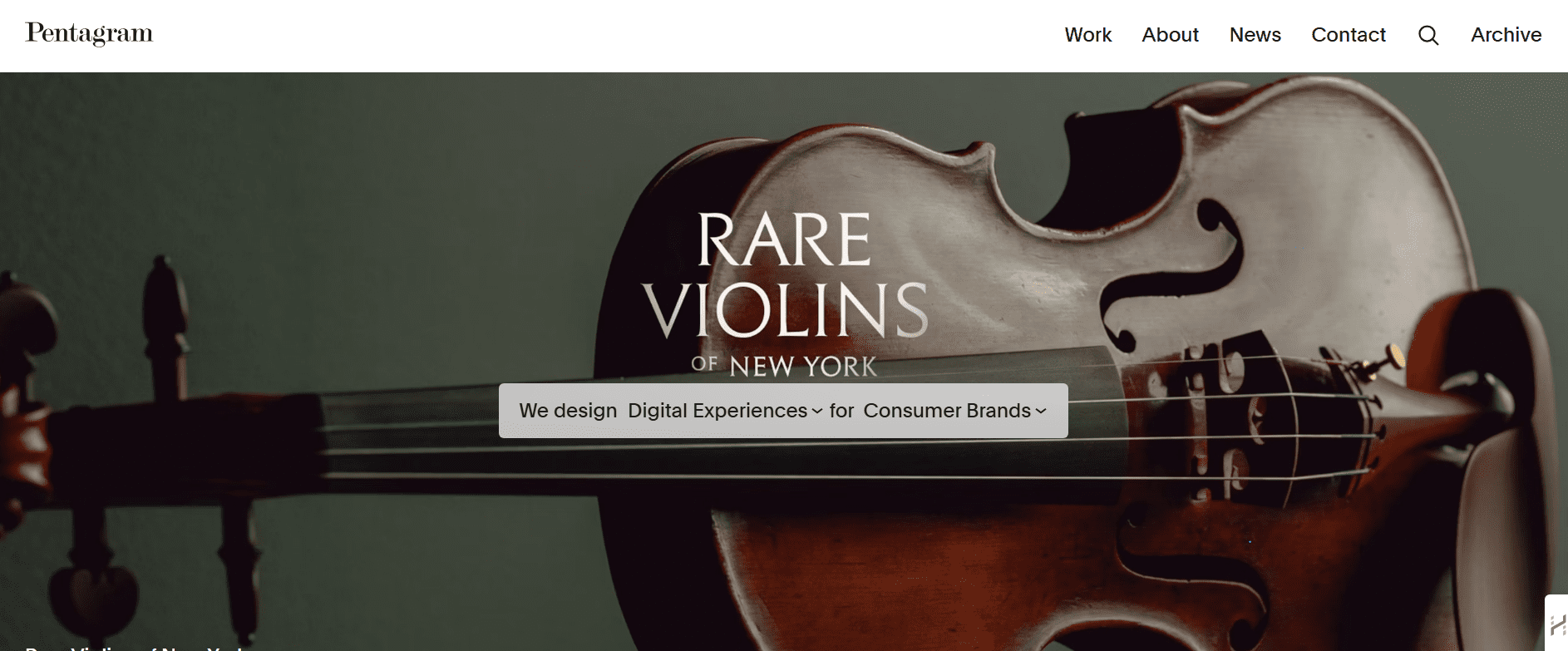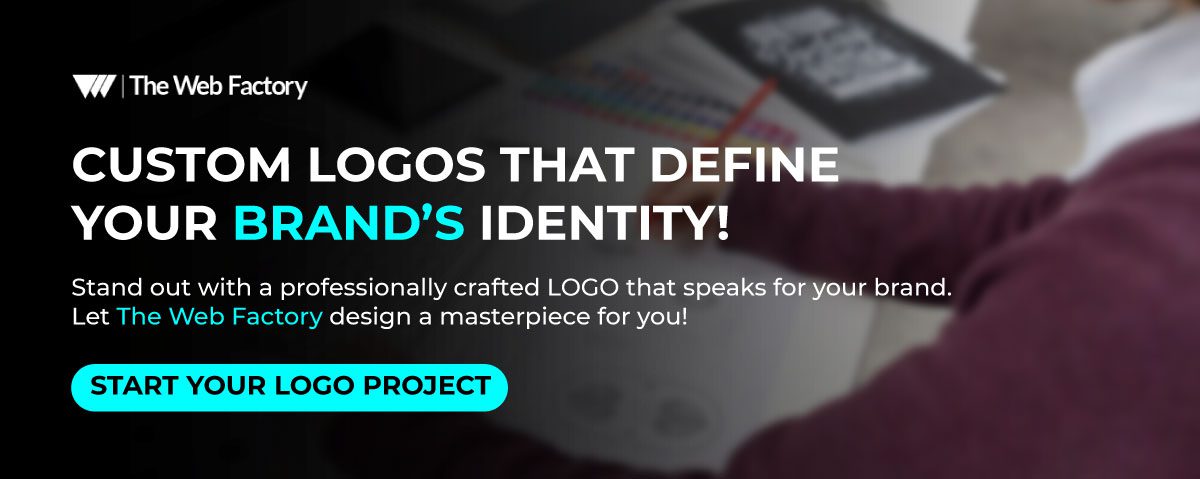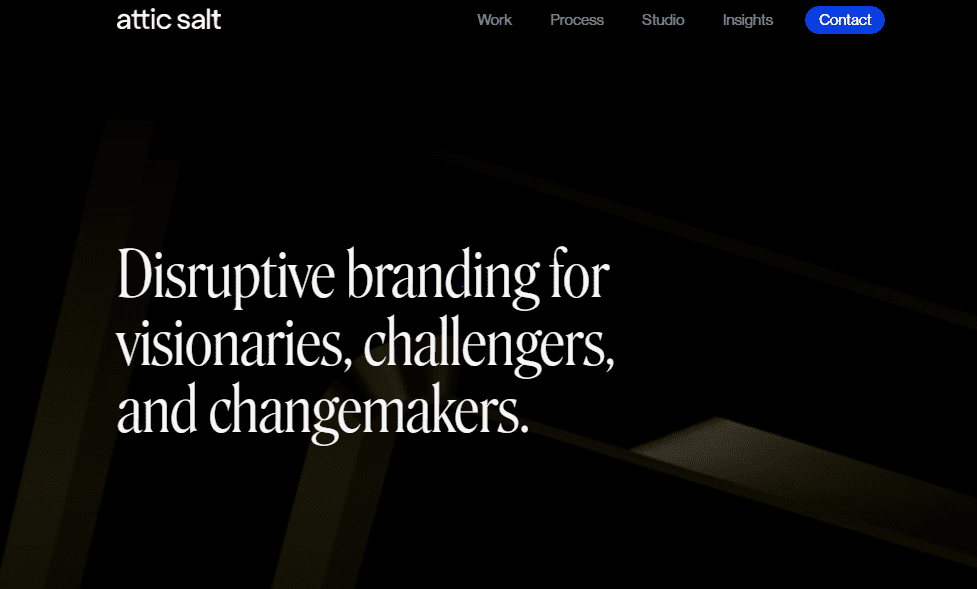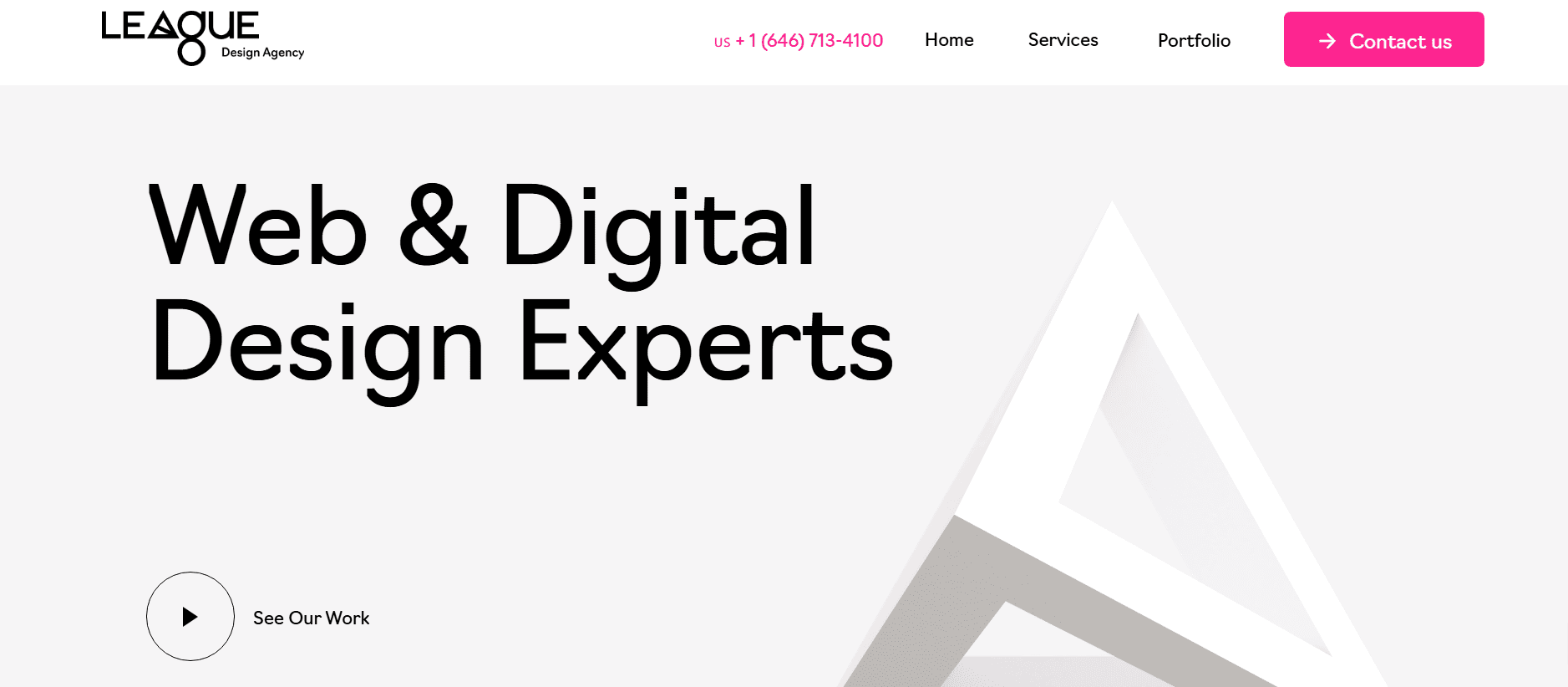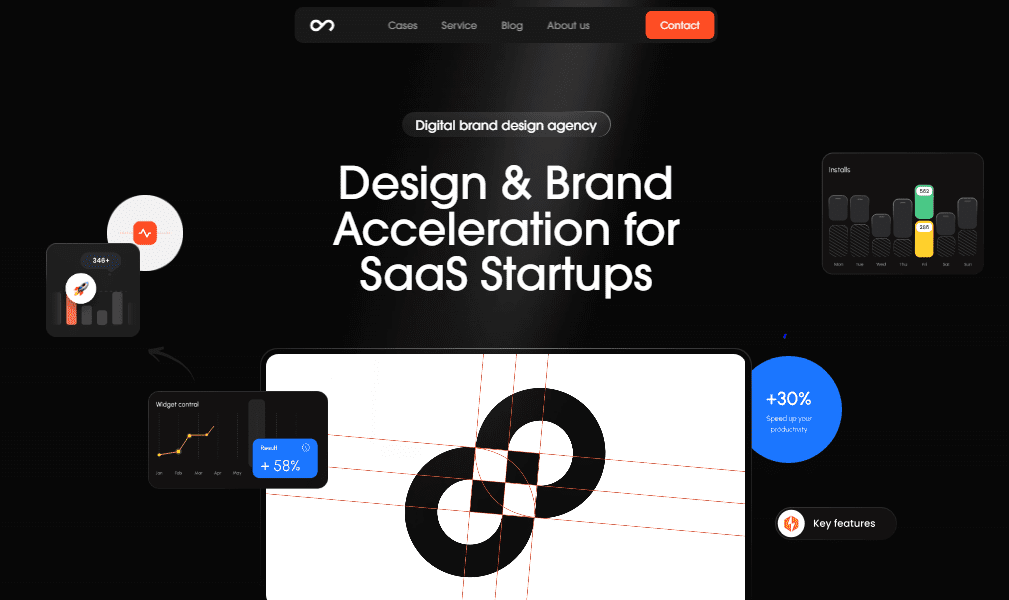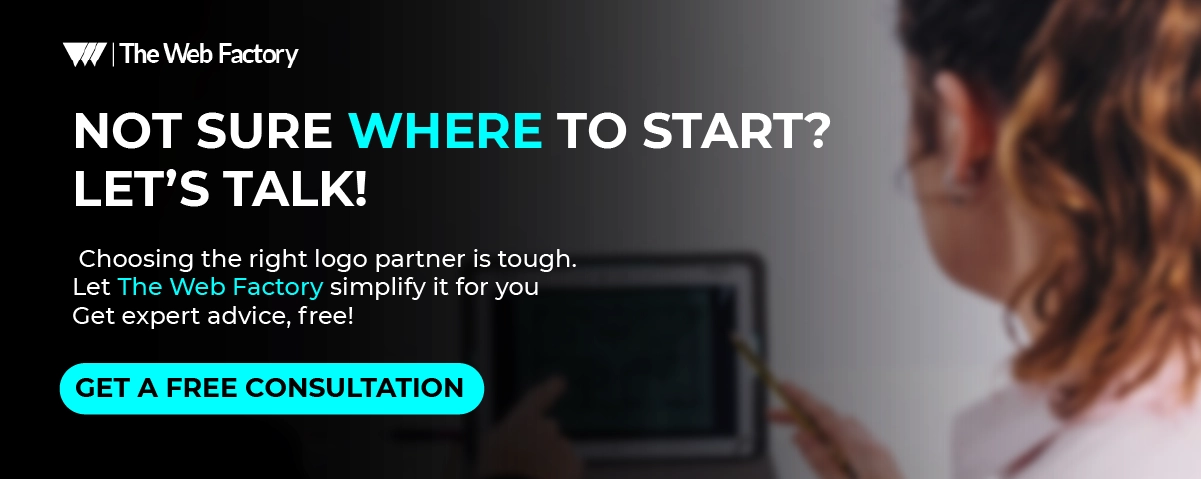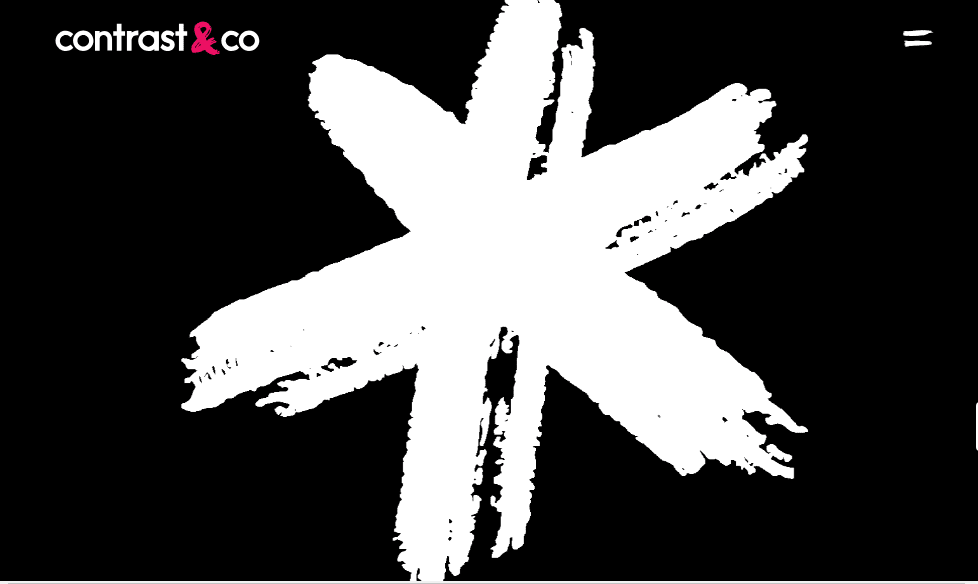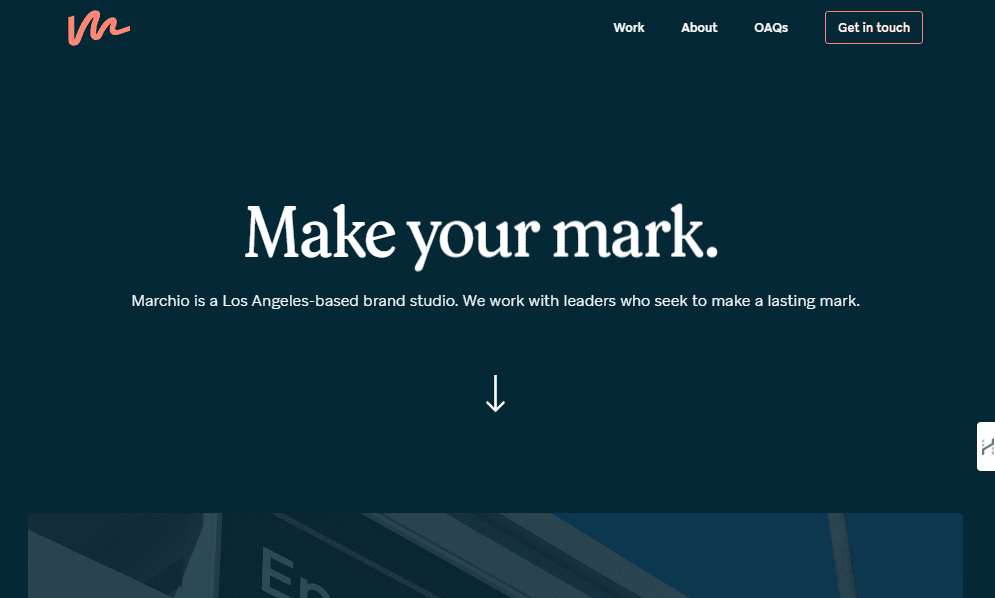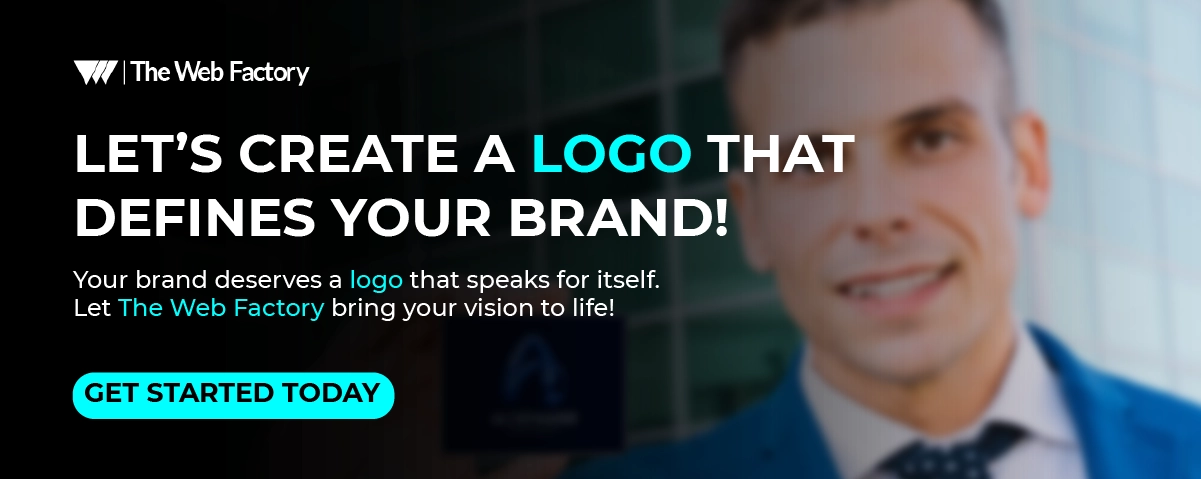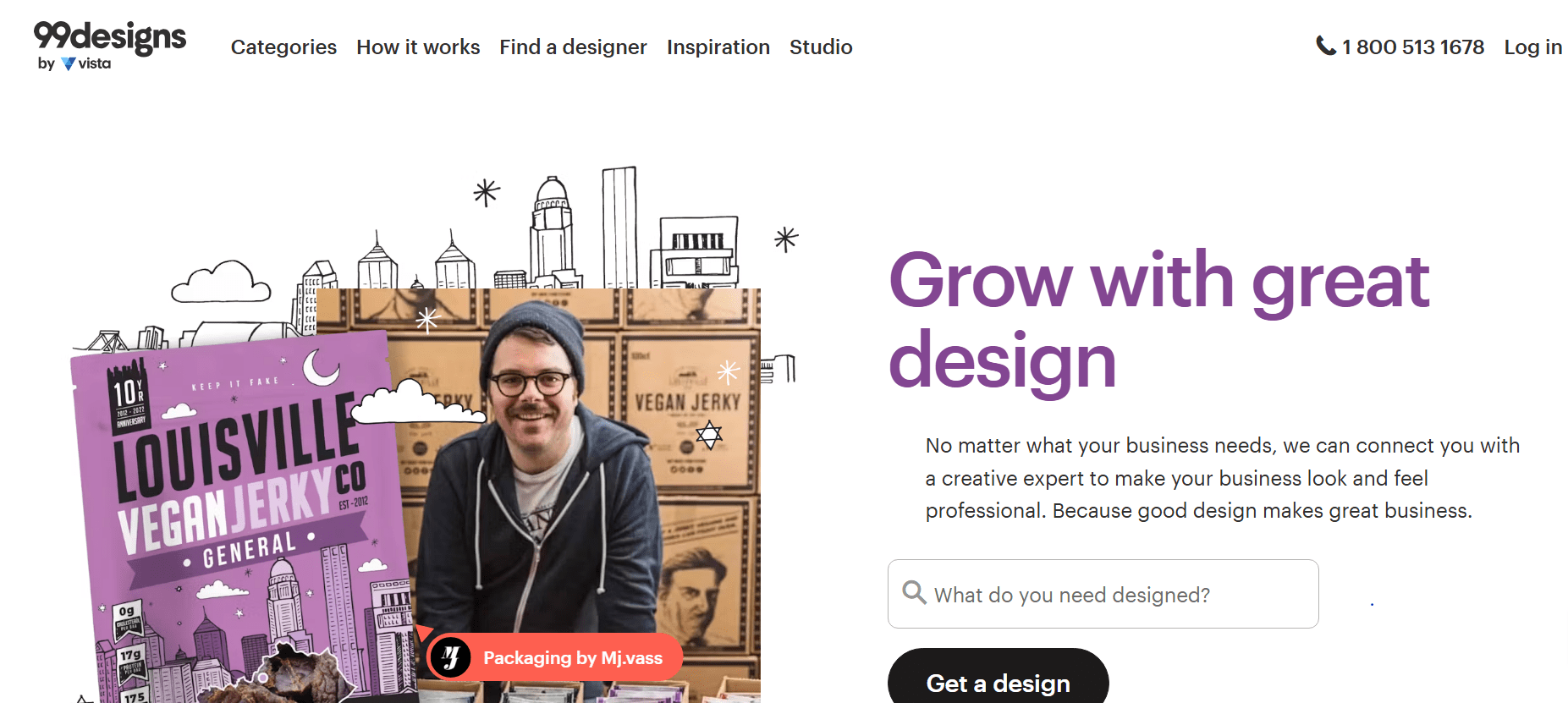/
0:00
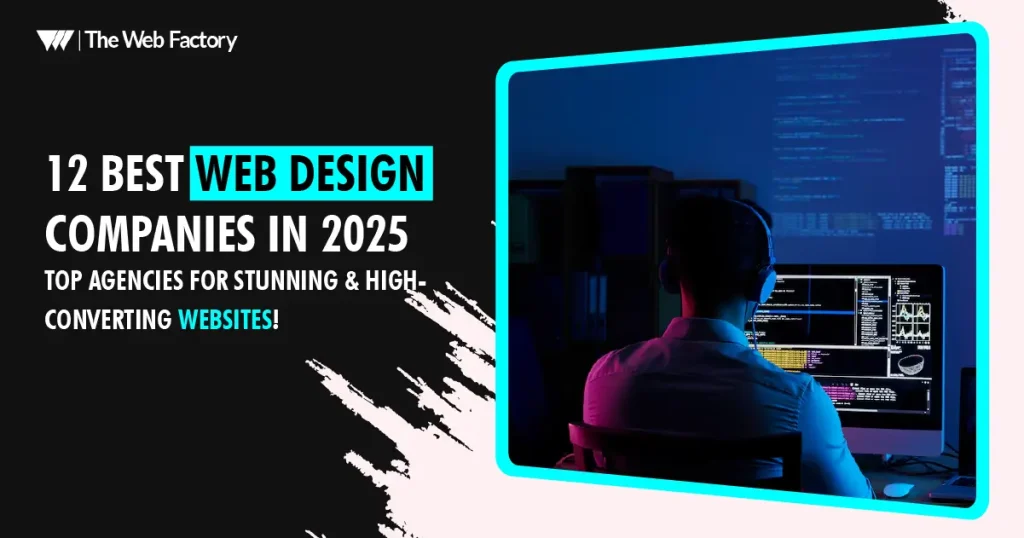
How to Build Engaging, High-Performing Web Experiences
Here’s the thing—
A website design agency knows you can’t afford to be forgettable on the internet anymore.
Static websites? They’re digital brochures.
But interactive websites? They pull people in. They move. They respond. They tell stories.
Whether you’re a brand, agency, creative, or ecommerce startup—if your website isn’t doing something, your audience is doing nothing.
So in this blog, we’re going deep.
You’ll get:
- 25 real interactive website examples—and what they did right
- A breakdown of what makes interactive websites work (and convert)
- A clear answer to: How do I create one? What’s worth investing in?
- Plus, answers to the questions everyone’s googling—like cost, timeline, design types, and more
Let’s dive into the sites that move people—and the thinking behind them.
What Is an Interactive Website?
An interactive website isn’t just something you scroll through. It’s something you engage with. It reacts, responds, adapts. It’s built to pull you in—through clicks, hovers, animations, quizzes, custom journeys, or even gamified elements.
Think of it like this:
- A static website tells you something.
- An interactive website shows you, involves you, and makes you feel something.
It’s about creating a two-way experience. A conversation, not a monologue. And when done right? It can drastically improve how long users stay, how much they explore—and yes, how likely they are to convert.
25 Best Interactive Website Examples (That Actually Work)
We’re not here to show you “pretty” websites. We’re here to show you interactive websites that perform—ones that turn passive viewers into active participants.
Below, we’ve curated 25 standout sites, broken down by type. For each one, we’re not just saying what it looks like—we’re breaking down why it works.
1. Locomotive (Creative Studio)
Website: https://locomotive.ca
What You See:
A sharp, fluid scroll experience with layers of motion. Cursor-reactive effects, dynamic typography, parallax visuals — everything feels alive.
What’s Happening?
- Scroll-Jacking Done Right: They control the pace, not to restrict you, but to guide you—like a director pacing a film.
- Motion Hierarchy: Not every element moves the same. Background shifts slightly. Foreground glides faster. CTAs pop subtly. Your eye follows a precise path.
- Typography as Experience: The type isn’t just readable—it moves, scales, and anchors your attention.
Why It Works?
They don’t tell you they’re cutting-edge. They let you feel it. The site doesn’t need to say “we’re good at digital design”—you know by the way it behaves. The medium is the message.
Takeaway:
If you’re a designer or creative agency, your site is your pitch deck. Locomotive proves you don’t need walls of text—just precision, emotion, and flow.
2. Active Theory (Immersive Studio)
Website:https://activetheory.net
What You See:
A gamified, almost alien-feeling 3D environment. You don’t scroll down—you navigate through. Think interactive web universe.
What’s Happening?
- WebGL + Real-Time Rendered Worlds: Their homepage is more engine than website. It’s rendered like a game—controlled via cursor, scroll, and drag.
- Minimal Interface, Maximum Discovery: No cluttered menus. Instead, interaction becomes navigation.
- Subtle Feedback Loops: Elements light up, shift, or respond as you hover—training you how to use the site without explaining anything.
Why It Works?
Active Theory doesn’t just showcase their skills—they create a digital environment that feels like the future. You don’t read about what they do—you live it.
Takeaway:
Want to be perceived as high-tech and immersive? Don’t explain. Build an experience where users lose track of time. Make them play. Make them explore.
3. Daniel Spatzek (Designer & Developer)
Website: https://www.spatzek.com
What You See:
A bold, horizontal-scrolling portfolio that breaks every grid rule—but still feels intuitive and smooth.
What’s Happening?
- Controlled Chaos: The layout feels wild—glitch effects, massive headers, overlays—but it’s all scripted tightly. Animations are timed and lightweight, never lagging.
- Personal Narrative, Abstracted: Instead of “About Me” or bullet points, you get movement, vibe, and tone. His personality is coded into the design.
- Magnetic Hovers + Cursor Play: The cursor becomes a tool—magnifying, pulling, stretching elements as you explore.
Why It Works?
It doesn’t try to fit into anyone else’s mold. It feels like Daniel. You remember it. You feel like you know him—before you even get to the contact form.
Takeaway:
A personal brand should reflect your personality. If you’re experimental, your site should look and feel like an experiment. Don’t chase trends—build a signature.
4. Obys Agency (Design Studio)
Website: https://obys.agency
What You See:
Bold, brutalist layouts with minimalist color palettes. Unexpected scroll directions, type that shifts with motion, and sharp page transitions.
What’s Happening?
- Horizontal + Vertical Scroll Hybrid: They use layered scroll techniques to build narrative pacing—horizontal for portfolio storytelling, vertical for brand sections.
- Asymmetry with Intent: Layouts feel rebellious but never messy. Each break from the norm is calculated, serving a design or emotional purpose.
- Sound-Enhanced UX: They integrate subtle sound cues, making the interaction feel even more immersive—something many overlook.
Why It Works?
Obys isn’t just showing off their work—they’re using the site as the medium. It’s a living example of their artistic courage and UX mastery.
Takeaway:
Structure doesn’t mean safe. If you’re bold and you know what you’re doing, break the rules—but do it with control.
5. Resn (Creative Studio)
Website: https://resn.co.nz
What You See:
A surreal, interactive journey into a virtual universe. Think floating elements, weird sounds, alien interfaces, and unpredictable navigation.
What’s Happening?
- WebGL-Laced Environment: The entire site is a surrealist, programmable playground. You experience their creative power without reading a word.
- Unconventional CTA Flow: There’s no straight funnel. They lead with curiosity and let your interaction drive the journey.
- Immersive Branding: Resn has a vibe—odd, futuristic, eccentric—and every pixel reinforces that brand tone.
Why It Works?
Most agencies sell you on process. Resn sells you on wonder. You don’t use the site—you fall into it.
Takeaway:
If your audience is creative, entertain them first. Engagement doesn’t come from structure—it comes from surprise.
6. NOMINT (Animation Studio)
Website: https://nomint.com
What You See:
A clean, almost editorial layout with highly dynamic video previews, seamless scroll reveals, and smooth transitions.
What’s Happening?
- Video as the Hero: They use high-quality reels and motion graphics in place of static thumbnails—everything’s in motion before you even click.
- Narrative Portfolio Flow: Each project case study opens with a punch—cinematic intros, storytelling, and full-screen motion.
- Simple Interface, Deep Storytelling: The UI is minimal, but once you dive into a project, it’s rich with detail, process, and context.
Why It Works?
They let their work do the talking—and they give it a cinematic stage. It’s professional, emotional, and crystal-clear.
Takeaway:
If you do motion or video, don’t hide it behind stills. Let your homepage move. Your site should feel like a trailer, not a PDF.
7. Bruno Simon (3D Developer Portfolio)
Website: https://bruno-simon.com
What You See:
A miniature 3D driving game where you navigate through Bruno’s portfolio in a virtual jeep.
What’s Happening?
- Real-Time 3D via WebGL + Three.js: The entire experience is a gamified portfolio with physics-based navigation.
- Play Before You Learn: You engage with the brand before you see any work. Movement is the interface.
- Easter Eggs + Interactivity: From tire tracks to interactive elements, it rewards curiosity.
Why It Works?
This isn’t just showing tech skills—it is the tech skills. The experience is proof of capability.
Takeaway:
If you’re a developer, stop saying what you can build. Integrate the proof directly into the website.
8. Gucci Beauty (E-Commerce / Brand)
Website: https://guccibeauty.com
What You See:
An art-gallery-style shopping experience—rich visuals, abstract layouts, slow-motion videos, editorial photography.
What’s Happening?
- Magazine-Like Navigation: Feels more like flipping through Vogue than browsing a product grid.
- Art Direction-First UX: Every product is part of a stylized visual story, with scroll animations creating mood, not just movement.
- Hybrid Layouts: Modular sections with layered scroll animations to create dynamic storytelling.
Why It Works?
Luxury doesn’t need to scream “Buy now.” Gucci makes the brand feel like high art—and sells through vibe, not pressure.
Takeaway:
For premium brands, storytelling sells more than urgency. Show the world where your product lives, not just the product.
9. Species in Pieces (Educational / Awareness)
Website: http://www.species-in-pieces.com
What You See:
A powerful interactive art piece where endangered species are displayed as morphing geometric fragments.
What’s Happening?
- CSS-Based Animation: Pure HTML/CSS with no external plugins—just code turning into emotion.
- Educational Depth: Click each species to get detailed info, conservation data, and visuals—all tied to an artistic theme.
- Minimalist but Impactful UX: Clean background, sharp typography, and timed interactions put the message front and center.
Why It Works?
It proves that web design can be art and activism at the same time—and all without using JavaScript.
Takeaway:
Don’t overengineer. If the message is powerful, let design amplify it—not drown it.
10. Moxy Studio (Creative Agency Website)
Website: https://moxy.studio
What You See:
A hyper-fluid scroll experience with smooth motion, bold typography, and playful transitions that feel alive.
What’s Happening?
- Scroll-triggered Layers: Content reveals are stacked and animated with parallax and layered transitions.
- Dynamic Case Studies: Project showcases pop with motion-based hover states and detailed, expandable views.
- Tone & Vibe: Everything feels deliberately chaotic—in a “this-agency-knows-what-it s-doing kind of way.
Why It Works?
They walk the talk. Everything from structure to flow communicates creativity without ever saying the word.
Takeaway:
When your brand is “creative,” your site should behave creatively. No static layouts. No boring grid. Just pure motion.
11. Nomadic Tribe (Interactive Storytelling)
Website: https://nomadictribe.com
What You See:
A cinematic digital journey following a fictional tribe across animated landscapes with scroll-based storytelling.
What’s Happening?
- Full-Screen Scroll Storytelling: Each scroll step changes the scene, like frames in a movie.
- Music + Motion Sync: Background soundtracks shift as you scroll, pulling you into the atmosphere.
- Layered World-Building: Environment changes, characters evolve, and the storyline adapts as you move.
Why It Works:
It’s not just a site—it’s an experience. Users become part of the journey, and that creates an emotional connection.
Takeaway:
Use storytelling mechanics. If you want people to stay, give them a reason to keep exploring.
12. Inside Abbey Road (Educational / Interactive Tour)
Website: https://insideabbeyroad.withgoogle.com
What You See:
A virtual walkthrough of the iconic Abbey Road Studios powered by interactive hotspots and multimedia.
What’s Happening?
- 360° Navigation: Users can explore every room, view historic details, and interact with mixing boards.
- Multimedia Layering: Embedded video clips, audio snippets, and tooltips give historical context in real time.
- Timeline Anchoring: You’re not just clicking around—you’re following a guided, immersive narrative.
Why It Works?
It’s educational without being boring. It turns information into a game—and that’s why it sticks.
Takeaway:
When your content is deep, don’t just present it—build a world around it.
13. Bruno Simon (3D Portfolio Website)
Website: https://bruno-simon.com
What You See:
A portfolio turned into a 3D driving game—literally. You’re behind the wheel of a toy truck navigating his work, bio, and contact info.
What’s Happening?
- WebGL + Three.js Power: Full 3D rendered environment built entirely in the browser.
- Physics-Based Interaction: The truck responds to clicks, gravity, and momentum in real time.
- Play-to-Explore Navigation: Users “drive” to different sections instead of clicking.
Why It Works?
Bruno’s work is creative dev—and the site is a bold, confident proof of concept. No need for testimonials when the site is the pitch.
Takeaway:
If your work is technical or niche, turn your website into a living demo.
14. The Cool Club (Interactive Product Website)
Website: https://www.thecoolclub.co
What You See:
A quirky, animated interface showcasing card decks featuring famous figures from music, art, science, and politics.
What’s Happening?
- Card-Based UI with Dynamic Sorting: Users can shuffle, flip, filter, and interact with characters in real time.
- Subtle Micro-Animations: Icons wiggle, cards dance, hover states surprise.
- Narrative Browsing: You don’t just “shop”—you explore, discover, and collect.
Why It Works?
They turned e-commerce into a playground. It keeps users engaged longer and increases product curiosity.
Takeaway:
Don’t just “display” your products. Let users play with them—even digitally.
15. Awwwards (Web Design Gallery / Voting Platform)
Website: https://www.awwwards.com
What You See:
An endless scroll of elite web designs—updated daily—with community-driven scoring and insights.
What’s Happening:
- Real-Time Voting: Users rate UX, UI, creativity, and content. Rankings shift dynamically.
- Interactive Filters: You can search by color, industry, format, and interaction level.
- Embedded Previews: Sites load within the page, so you never leave the platform.
Why It Works:
Awwwards doesn’t just talk about great design—they showcase it, dissect it, and crowdsource feedback. Designers stay glued.
Takeaway:
If your niche loves comparison, turn your site into a platform—don’t just be the expert. Host the conversation.
16. Species in Pieces (Educational / Interactive Art)
Website: http://species-in-pieces.com
What You See:
A beautifully abstract digital exhibition featuring 30 endangered species—each built from 30 triangular fragments that animate into life.
What’s Happening?
- SVG + CSS Animation: Each species morphs into the next using vector shapes, no videos or 3D.
- Data-Driven Storytelling: With each transition, detailed conversation info slides in.
- Scroll-Triggered Exploration: You guide the pace. Pause, reflect, skip, repeat—your call.
Why It Works?
This isn’t just design—it’s digital activism. Art meets science meets web. The visuals are memorable, but the message hits deeper.
Takeaway:
Interactive design can educate emotionally. Shape narratives that move, not just inform.
17. Webflow (Product Website + Experience Playground)
Website: https://webflow.com
What You See:
A slick SaaS site with lightning-fast load times, modular sections, and case studies that feel cinematic.
What’s Happening:
- Live Product Demos Embedded in Page: You can try Webflow’s features without signing up.
- Scroll-Based Motion & Transitions: Headers morph, CTAs slide, interfaces come alive as you scroll.
- Context-Aware Interactions: Pop-ups, tutorials, or callouts change depending on how you engage.
Why It Works:
Webflow sells interactivity—so their site is interactive by default. But it’s also educational, showing you what’s possible with their platform.
Takeaway:
If your product is powerful, let users experience it right away—don’t make them guess or scroll forever.
18. CLM BBDO – Casseurs Flowters (Entertainment / Music Promotion)
[Archived version available online]
What You See:
A virtual apartment tied to a rap duo’s concept album—you “walk” through their life and explore songs tied to specific rooms.
What’s Happening:
- Narrative + UX Fusion: Every interaction moves the music video and story forward.
- Environmental Interaction: Clicking objects triggers audio, lyrics, or backstory.
- Time-Based Unlocks: Some rooms only open after exploring others, building mystery.
Why It Works:
This is storytelling on steroids. You don’t just listen to the music—you live it. It’s immersive brand building at its finest.
Takeaway:
Fuse product and environment. Build a world, not just a webpage.
19. Bruno Simon Portfolio (3D Developer Portfolio)
Website: https://bruno-simon.com
What You See:
You drive a tiny 3D car around his portfolio—a fully explorable world where each section is a location.
What’s Happening:
- Three.js 3D engine: The entire site is rendered like a game.
- Physics engine + gamified UI: You crash, bounce, and navigate like it’s a sandbox.
- Minimal text, max engagement: Everything is visual, reactive, and interactive.
Why It Works:
It’s unforgettable. You don’t just view the portfolio—you experience it. It perfectly reflects his technical and creative skills.
Takeaway:
When your audience is developers or creatives—go bold. Let your work speak through the experience itself.
20. Active Theory (Creative Studio Site)
Website: https://activetheory.net
What You See:
Futuristic, dark-themed layout with glitchy transitions, kinetic typography, and immersive case studies.
What’s Happening:
- WebGL magic: Everything moves—text flickers, images melt, and transitions feel like cinematics.
- Full immersive environments: Case studies feel like short films you scroll through.
- Minimal UI, max impact: Navigation is seamless, intuitive, and deeply branded.
Why It Works:
Active Theory is showing, not telling. Their site is a demo of what they build for others—dynamic, immersive web experiences.
Takeaway:
If your product is intangible (like creativity or storytelling), build your pitch into the medium.
21. Resn (Creative Studio / Entertainment)
Website: https://resn.co.nz
What You See:
A strange, surreal, almost absurdist site experience where you scroll through weird animated sequences, interact with eerie objects, and feel the brand’s wild energy.
What’s Happening:
- Asymmetric design choices: Nothing about this layout is traditional.
- Interactive absurdism: Hover effects, kinetic scrolls, unpredictable transitions.
- High contrast UX: Their creative chaos is designed to evoke curiosity and make you feel uncomfortable—but engaged.
Why It Works:
It completely breaks convention, and that’s the point. It dares you to look away—but you can’t.
Takeaway:
Sometimes weird wins. Be radically different when everyone else plays it safe.
22. Inside Chanel (Luxury Brand Storytelling)
Website: https://inside.chanel.com
What You See:
A cinematic journey through Chanel’s history—told through motion graphics, audio, and interactive timelines.
What’s Happening:
- Parallax storytelling is tied to scroll speed
- Embedded video + motion typography
- Responsive layouts across devices
Why It Works:
This isn’t just a brand site—it’s a digital museum. The experience reflects the elegance and heritage of Chanel itself.
Takeaway:
Great storytelling isn’t just about words. It’s how you make people feel while they scroll.
23. Nurture Digital (Creative Agency)
Website: https://www.nurturedigital.com
What You See:
Full-screen visuals, seamless transitions, and a bold, unapologetic aesthetic with minimal copy.
What’s Happening:
- Cinematic site flow that almost feels like watching a trailer
- High-res video backgrounds and scroll-triggered animations
- Tactile transitions that invite deeper exploration
Why It Works:
It leans into vibe, not just visuals. Every part of the experience screams, “We’re not like the others.”
Takeaway:
If your goal is to attract bold brands, your site better be bold too.
24. The Cool Club (E-commerce / Card Game)
Website: https://thecoolclub.co
What You See:
Cards pop, flip, animate, and behave like physical objects. The whole site feels like a digital playground.
What’s Happening:
- Gamified product pages with motion on hover
- Playful animations + sound FX
- Responsive for all screen sizes
Why It Works:
This isn’t just selling products—it’s selling fun. It draws you in and makes you want to interact even if you’re not buying.
Takeaway:
The shopping experience is the product. Make it memorable.
25. The Boat by SBS (Interactive Storytelling / Educational)
Website: https://www.sbs.com.au/theboat/
What You See:
A graphic novel-meets-website that tells the story of Vietnamese refugees. Haunting, emotional, and deeply immersive.
What’s Happening:
- Scrollytelling mechanics that sync images, text, and sound
- Ambient audio + animation as the narrative unfolds
- Minimal UI distractions, focused entirely on emotional pacing.
Why It Works:
It breaks every rule of conventional web layout—and you won’t even notice. That’s how immersive it is.
Takeaway:
If the message matters, build a format that does it justice.
Final Thoughts: Your Website Shouldn’t Just Exist—It Should Engage
The truth is, most websites are just… there. Static. Predictable. Forgotten.
But interactive websites? They pull people in. They spark curiosity, drive clicks, and build connections. Every example you’ve seen above proves that—whether it’s an agency’s showpiece, an ecommerce store that converts like crazy, or an educational platform that makes you want to keep scrolling.
If you want to create a site that performs in 2025, you can’t just focus on looks. You need strategic interactive website development. In 2025, you can’t just focus on its appearance; it needs to be fused with design thinking, modern tech, and, most importantly, user intent.
Need a place to start? Dig into the 27 Latest Web Development Trends & Technologies in 2025—you’ll see just how fast things are evolving. Or explore the 55 Best Website Design Ideas to get fresh visual direction. Want pro help? The 12 Best Web Design Companies in 2025 are setting the benchmark—and many of the sites in this post came straight from their studios.
In the end, the goal isn’t to be trendy. It’s to be unforgettable.
And if your website can do that? You’ve already won.
Frequently Asked Questions Related To Interactive Websites
An interactive website design responds to user input. That input could be a click, scroll, hover, voice, or even movement. The site doesn’t just show content—it reacts. Think sliders, live chatbots, drag-and-drop features, custom animations, quizzes, calculators, or personalized dashboards.
The point is to keep people engaged, not just reading but participating. When done well, it doesn’t just “look good”—it converts better and makes users stick around longer.
Dynamic websites are like chameleons. They adapt and display different content depending on who’s visiting, what time it is, or what device they’re using.
These sites are built using backend logic—usually databases and programming languages like PHP or JavaScript. Think blogs, e-commerce stores, dashboards, or news sites that update constantly.
In short:
- Static site = same content for everyone
- Dynamic site = content that adjusts based on context
All interactive sites are dynamic, but not all dynamic sites are interactive.
Here’s the simplified breakdown:
- Static Design: Fixed layout. What you build is what everyone sees. Fast, cheap, but not flexible.
- Dynamic Design: Powered by a CMS or scripts. Content updates automatically or based on logic.
- Responsive Design: Adjusts layout depending on screen size—mobile, tablet, desktop.
Bonus style:
Interactive Design—layers on top of the above and makes the site feel alive by involving the user directly.
It depends on complexity, team, and scope.
Here’s a quick breakdown:
|
Type |
Estimated Cost |
|
Basic interactive portfolio |
$3,000 – $7,000 |
|
Mid-range brand site with animations |
$10,000 – $20,000 |
|
High-end, custom interactive site (e.g., product launch or SaaS dashboard) |
$25,000 – $100,000+ |
Pros:
- More engaging and memorable
- Boosts time-on-site and conversion rates
- Helps stand out in saturated markets
- Encourages repeat visits and social sharing
- Great for storytelling and branding
Cons:
- More expensive to design and build
- Longer development time
- Can hurt performance if not optimized (animations = heavier load)
- Requires ongoing maintenance and testing
The upside? If you do it right, it’s not just a site. It’s an experience—and people remember experiences.
Anywhere from 4 to 20+ weeks, depending on:
- Number of pages
- Complexity of interactions
- Custom design vs. templates
- How many rounds of revisions
- Testing, optimization, QA
Here’s a ballpark:
- Basic (5–7 pages, minor animation): 4–6 weeks
- Mid-size (10–20 pages, moderate interactivity): 8–12 weeks
- Large-scale (custom UX, databases, heavy scripting): 16–20+ weeks
Pro tip: It’s not just the dev work—it’s the planning, testing, and refining that takes time.
Depends on your goal.
- Want to sell products? Go for an e-commerce site with dynamic features and a smooth UI.
- Need to showcase work? A portfolio with scroll animations and micro-interactions will shine.
- Trying to educate? An interactive learning site with quizzes and video modules works best.
- Launching a SaaS? You need a functional, responsive dashboard with custom logic and API integrations.
The best type is the one that aligns with what your users want—and what your business needs to do.
Here’s a simplified path:
- Define your goals. What does “interactive” mean for your audience?
- Sketch the UX. Plan how users will move, click, scroll, and react.
- Choose tools. You can build with:
- Webflow (great for animation-heavy sites)
- WordPress + plugins
- Custom code (for full control)
- Webflow (great for animation-heavy sites)
- Design with intent. Use animation and interaction to guide—not distract.
- Develop with care. Optimize every step, test on all devices.
- Launch and iterate. Collect data and improve what isn’t working.
Or… hire a web design agency with experience in interactive sites (yep, shameless plug if you’re offering services).
Here’s how to spot one:
- The site responds to your actions in real-time.
- You’re not just watching—you’re doing something.
- Features like sliders, calculators, hover effects, quizzes, gamified experiences, and scroll-triggered animations.
- It gives feedback—visually, audibly, or through motion.
- It feels like you’re part of the story—not just reading one.
Interactive websites are built to pull you in and keep you there. If a site makes you want to click, explore, or engage, that’s the magic.

